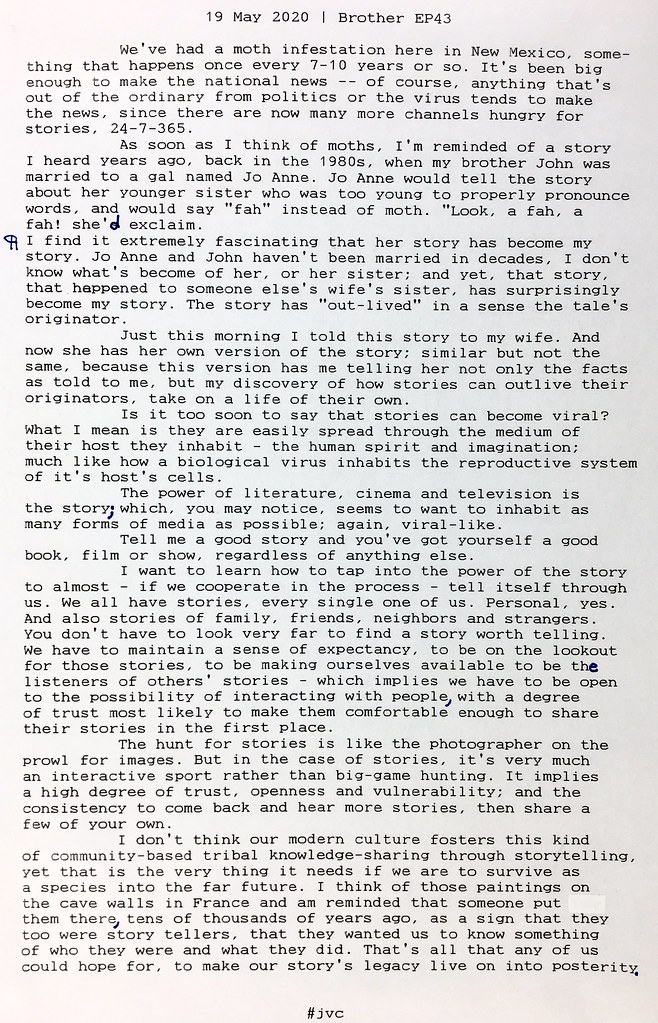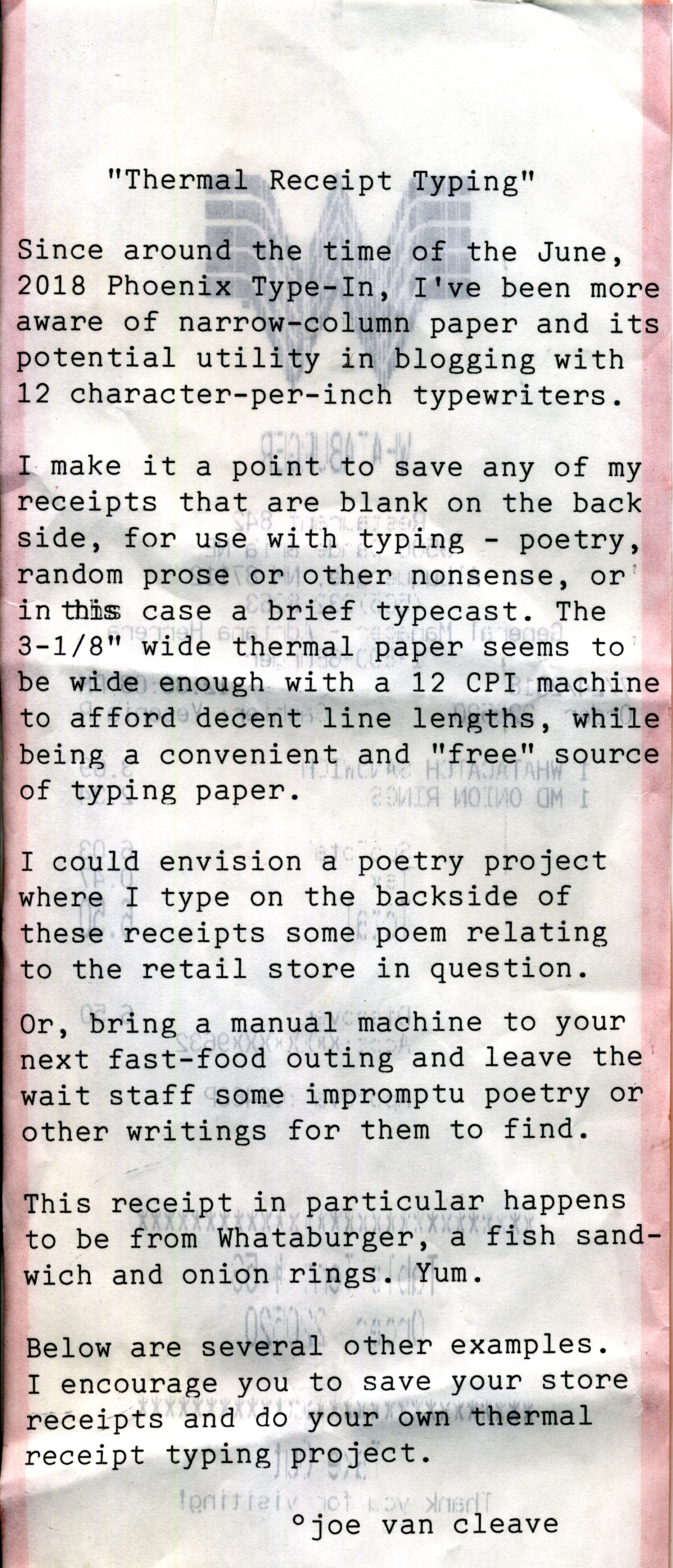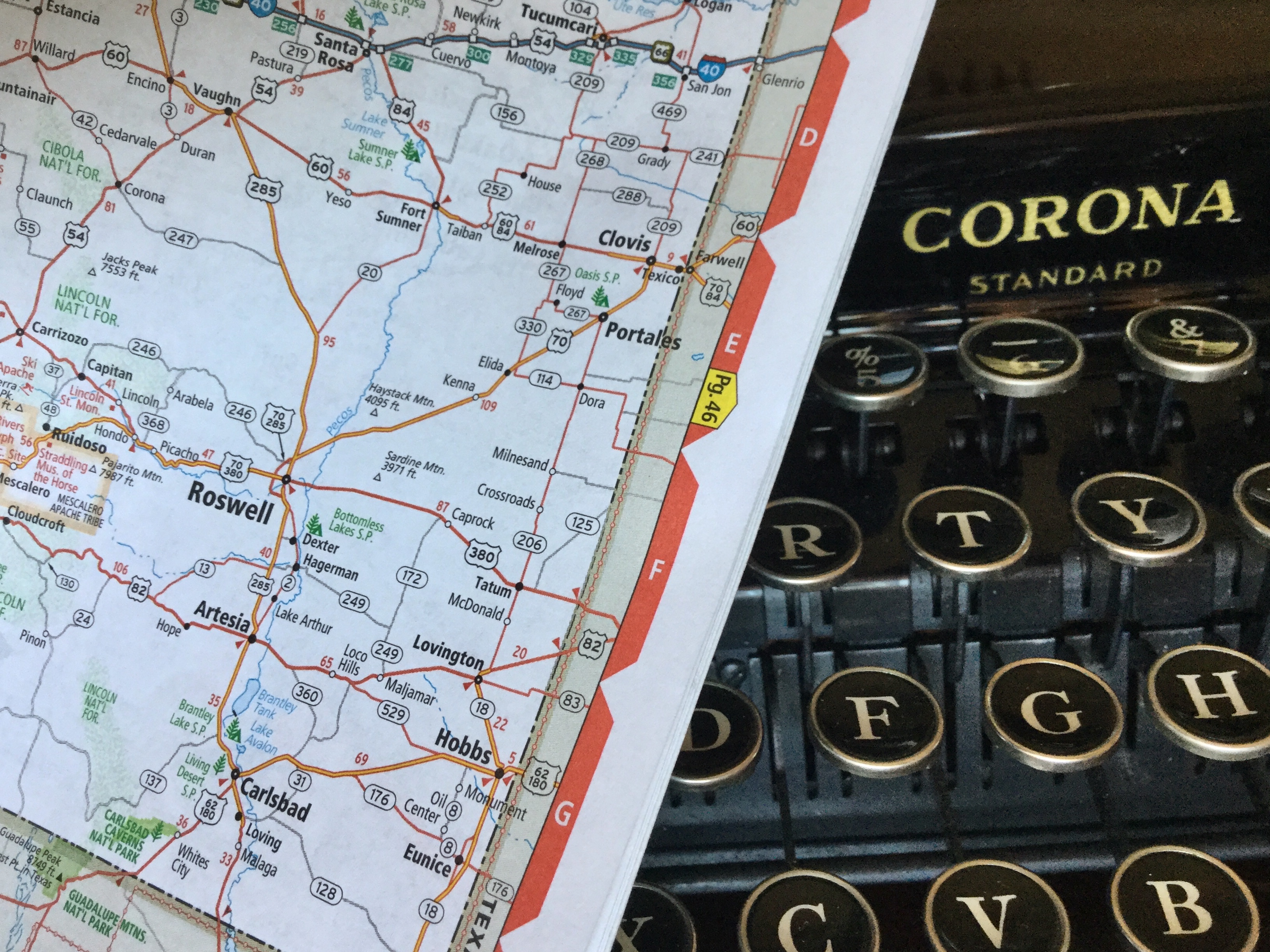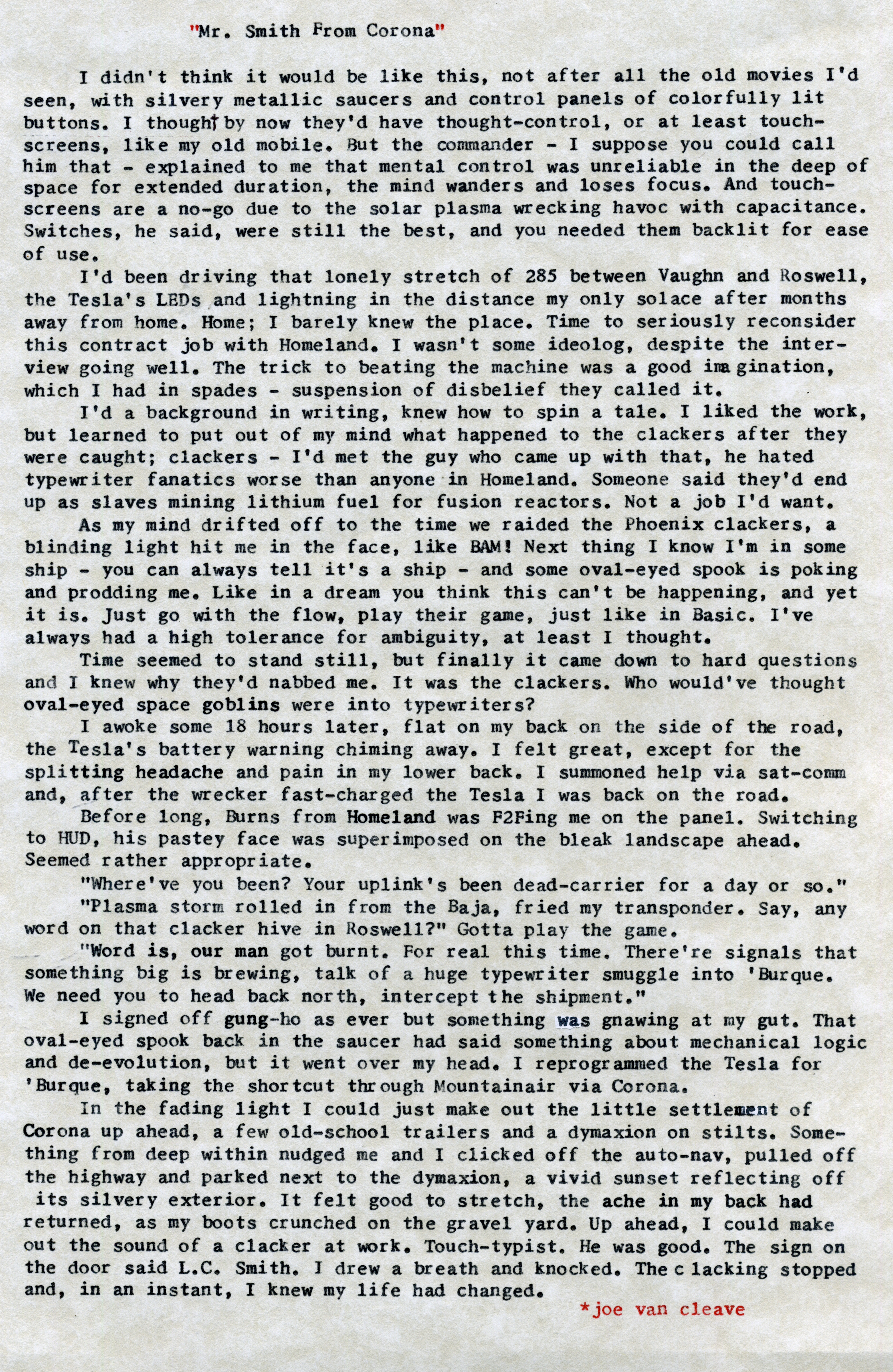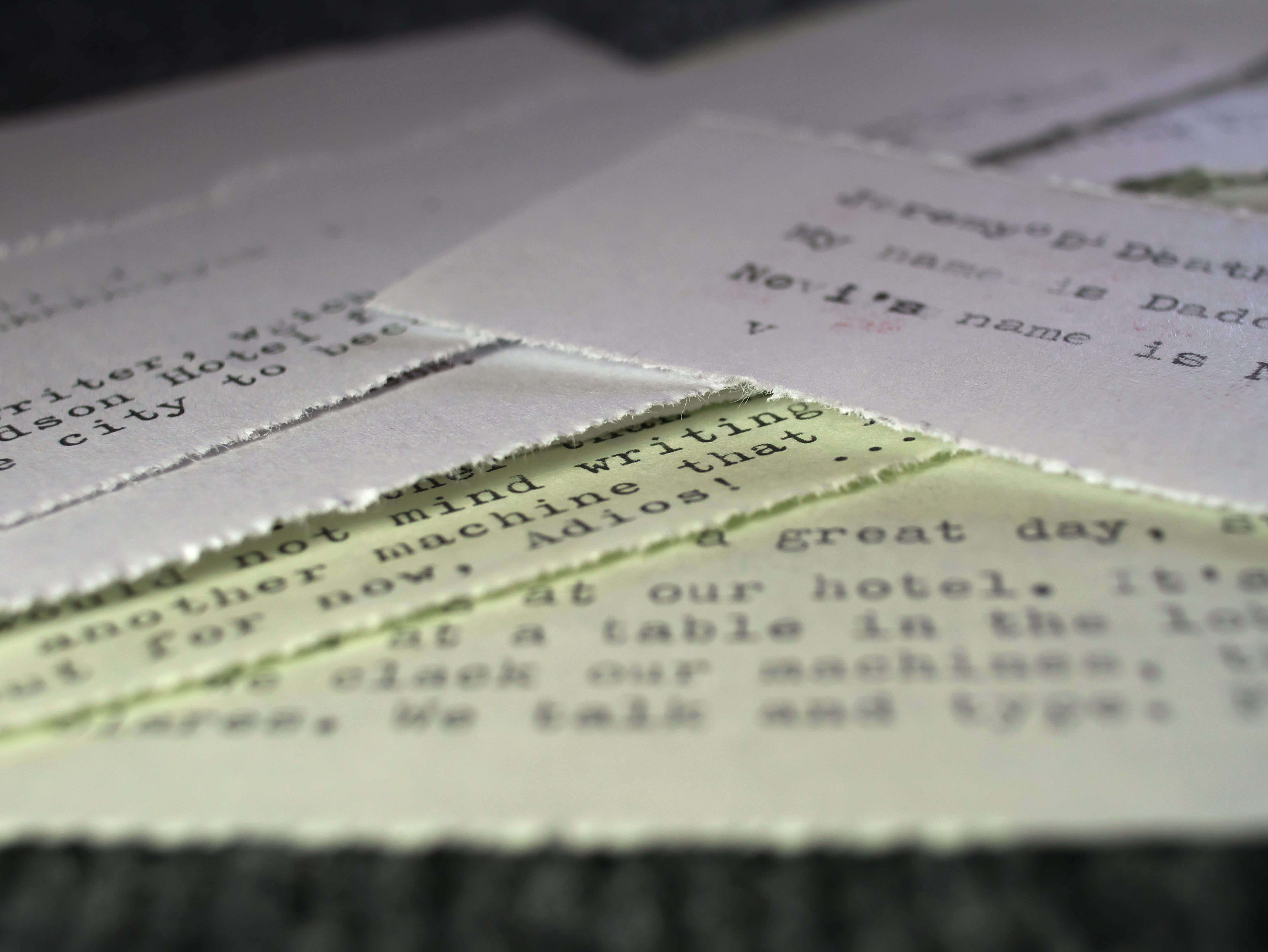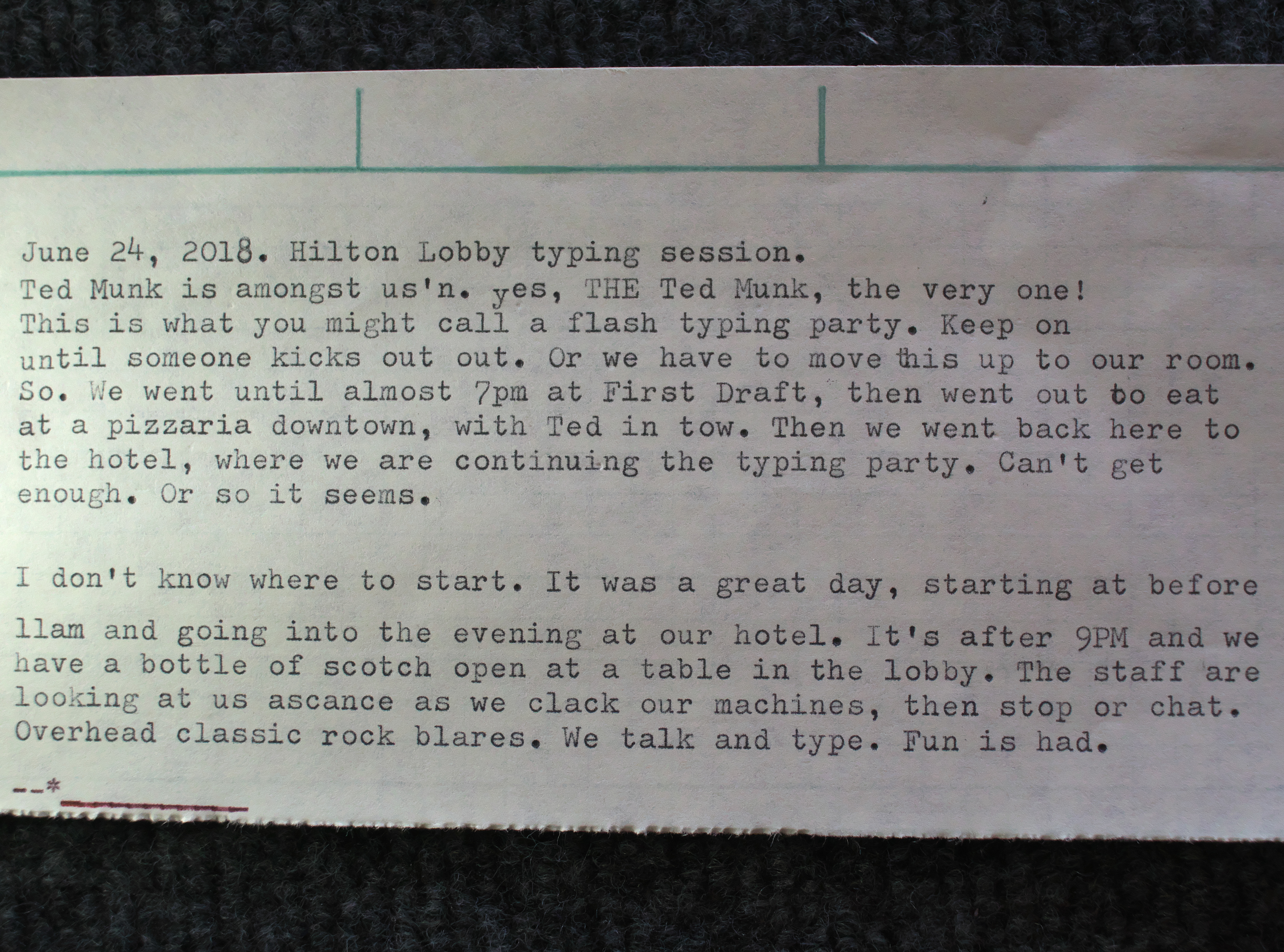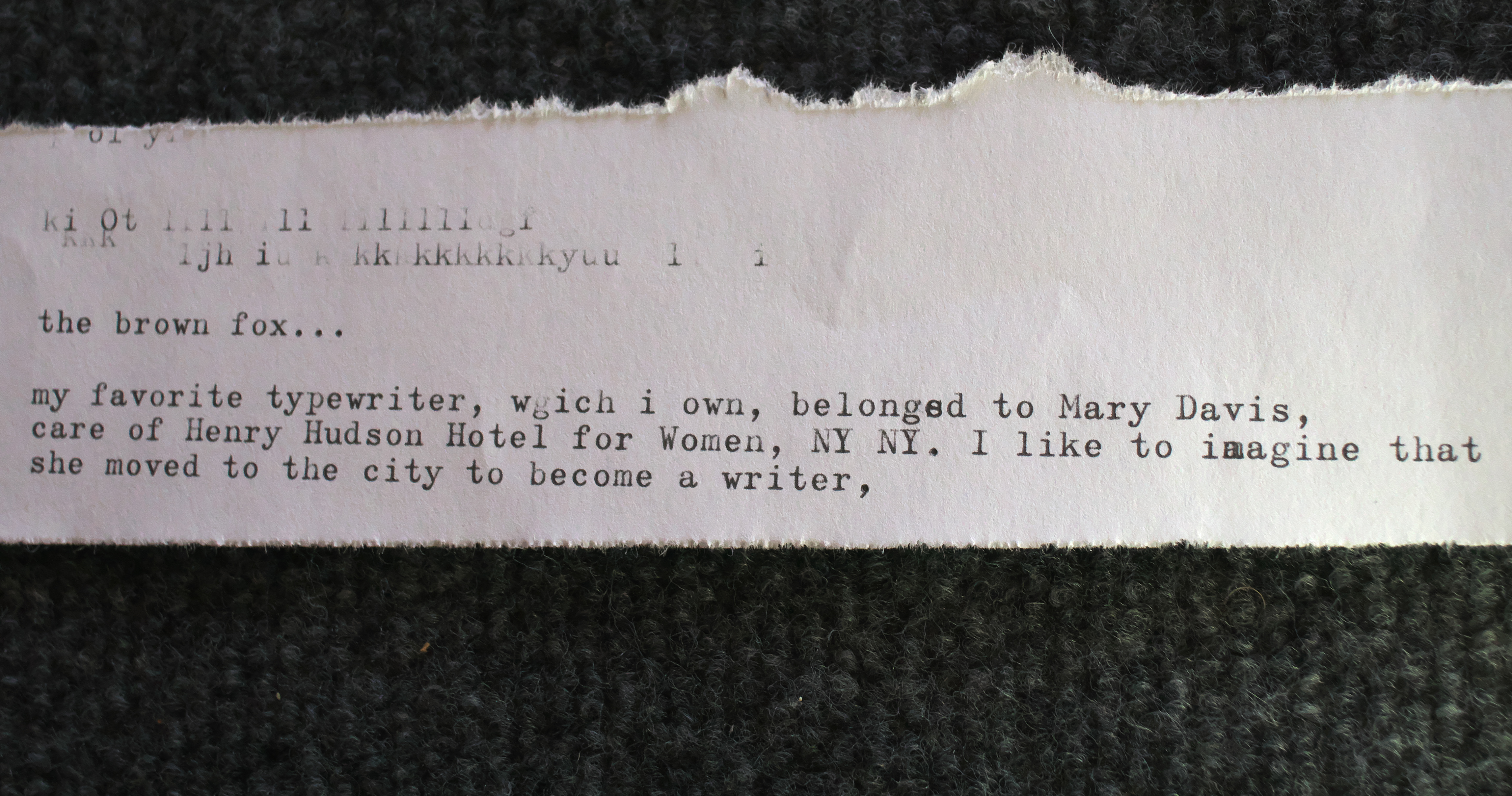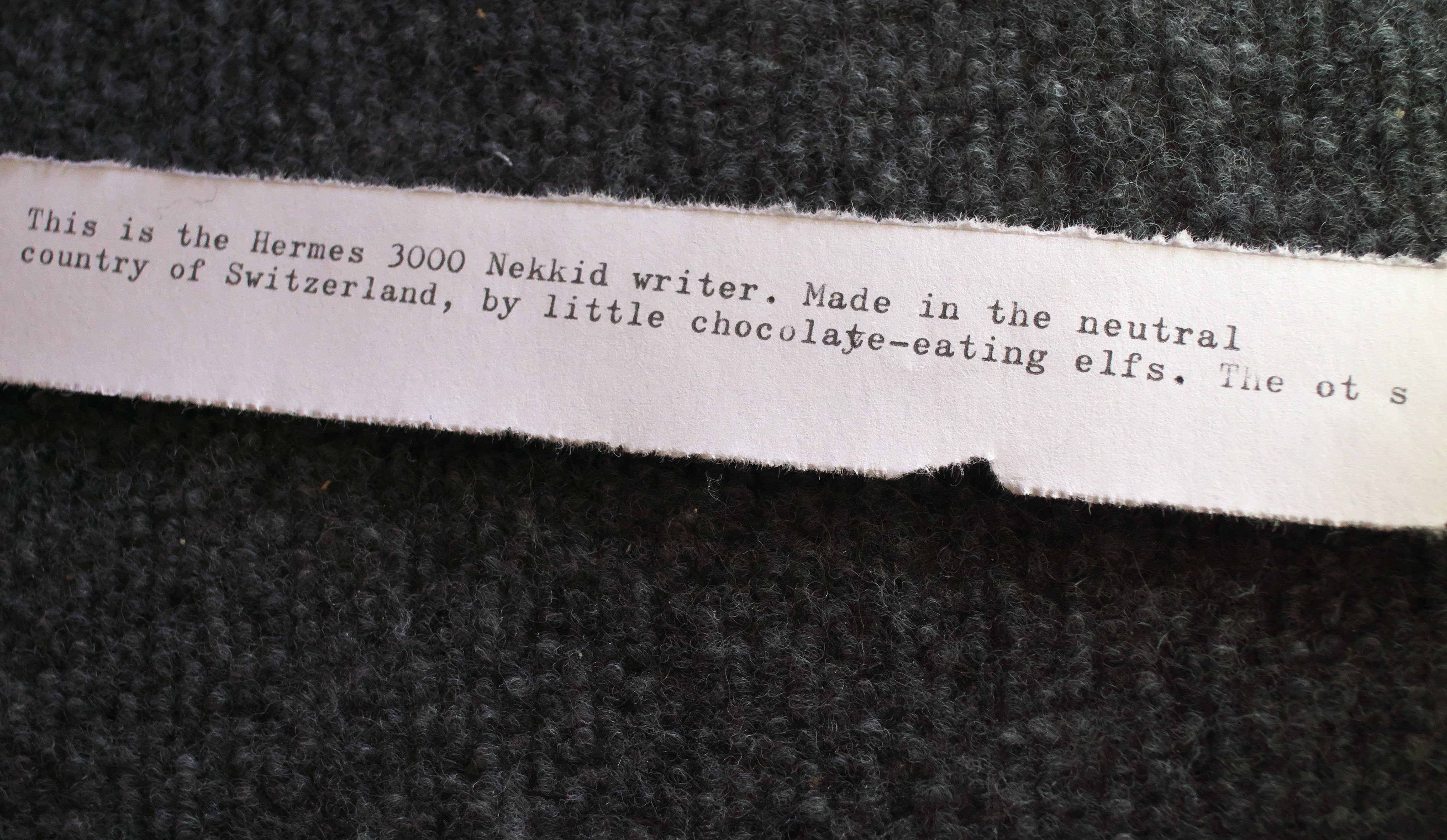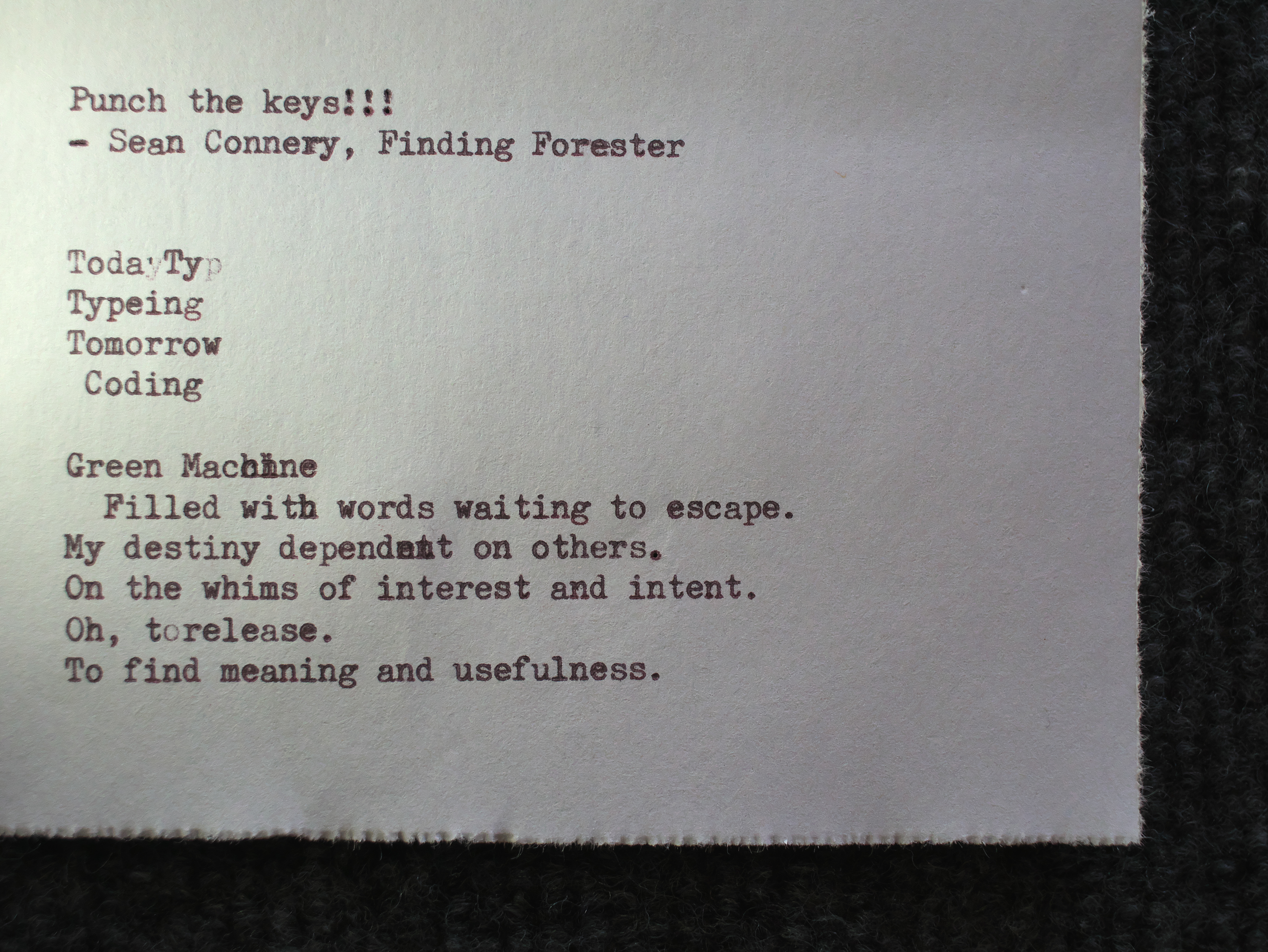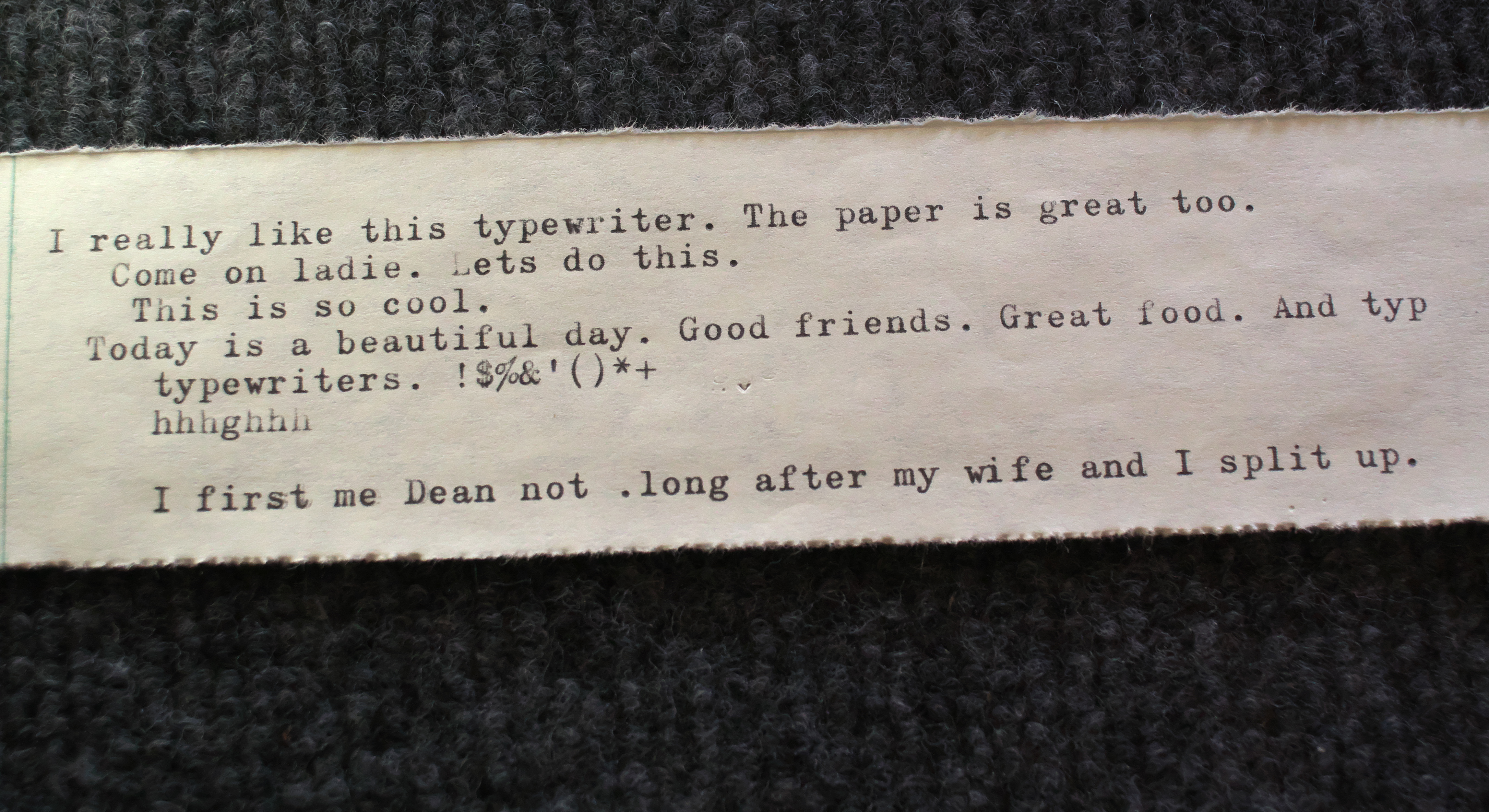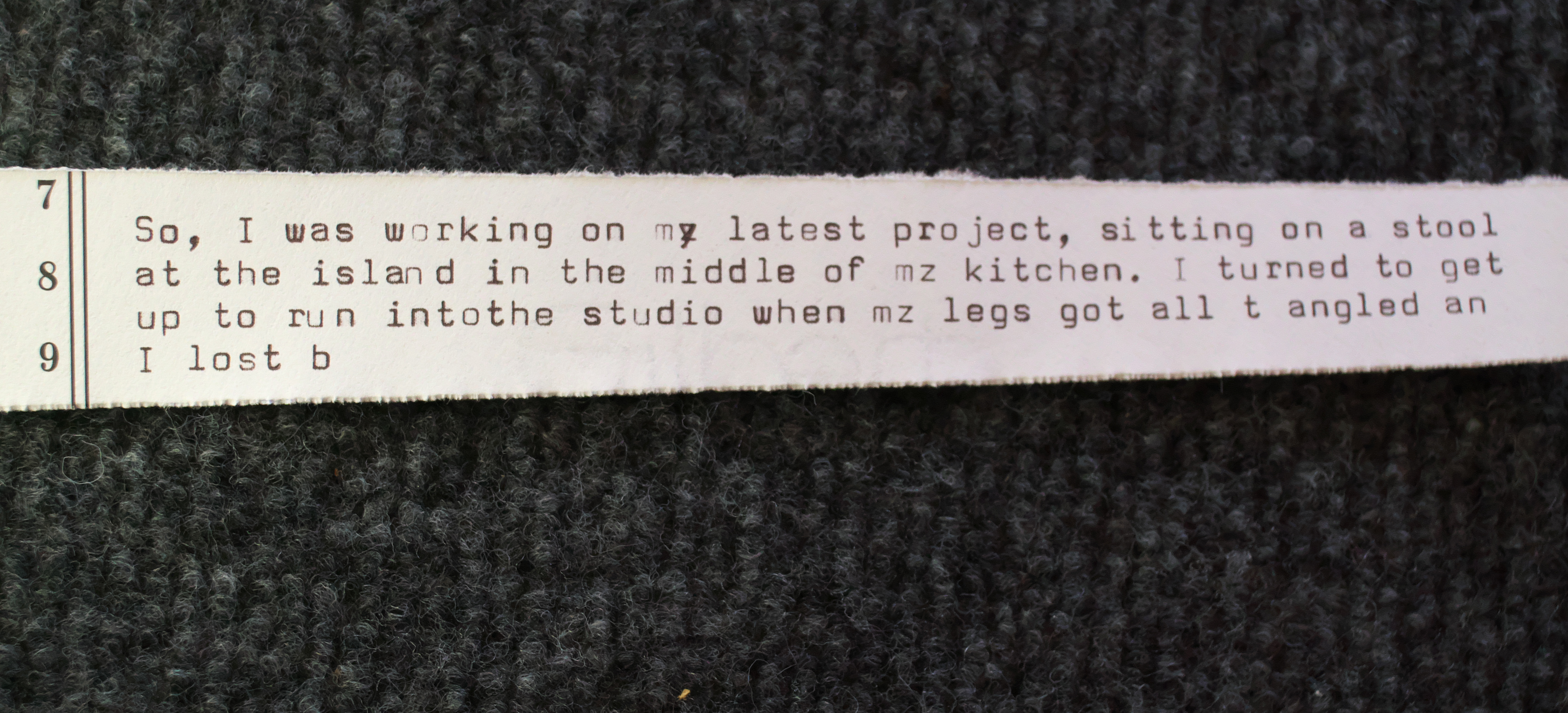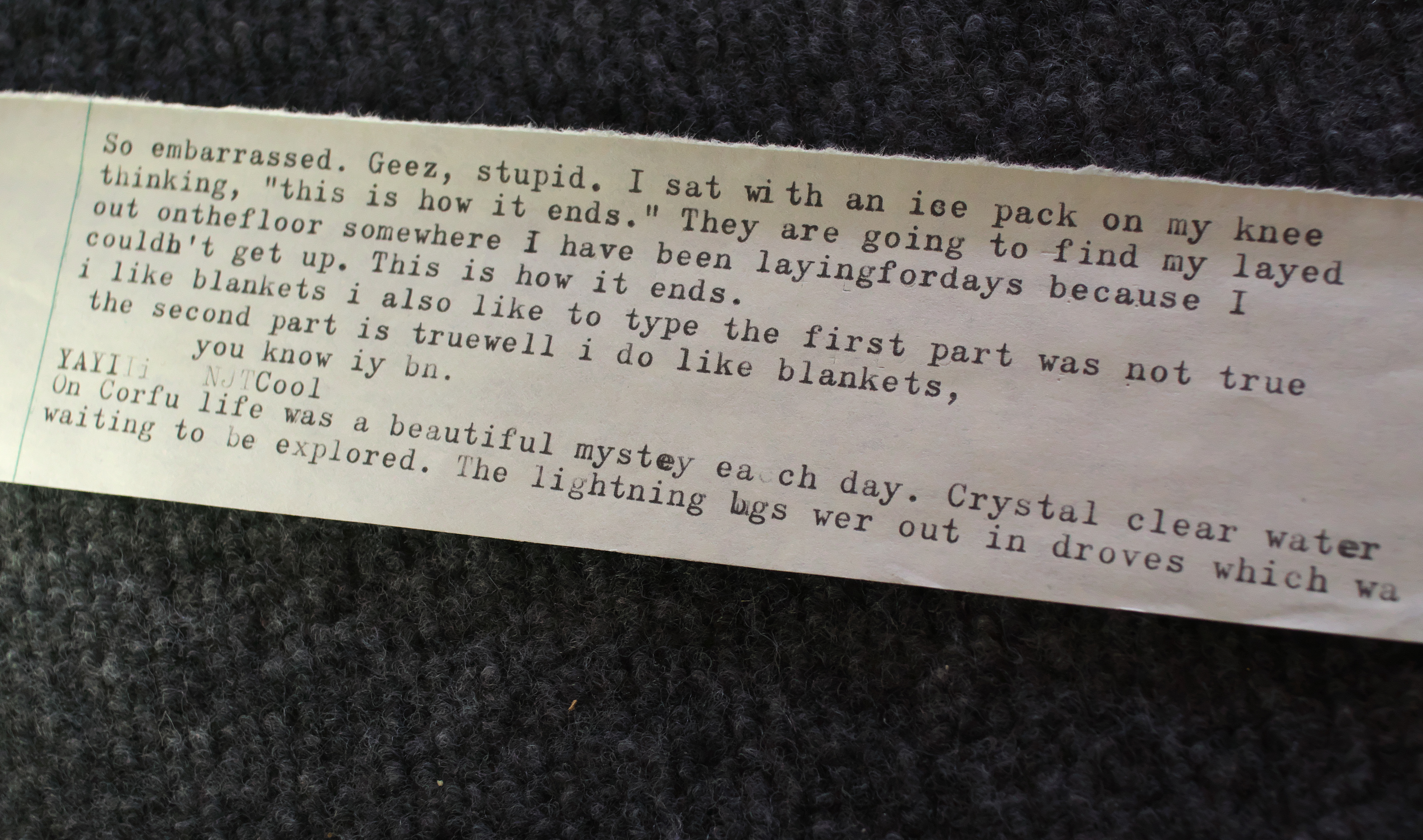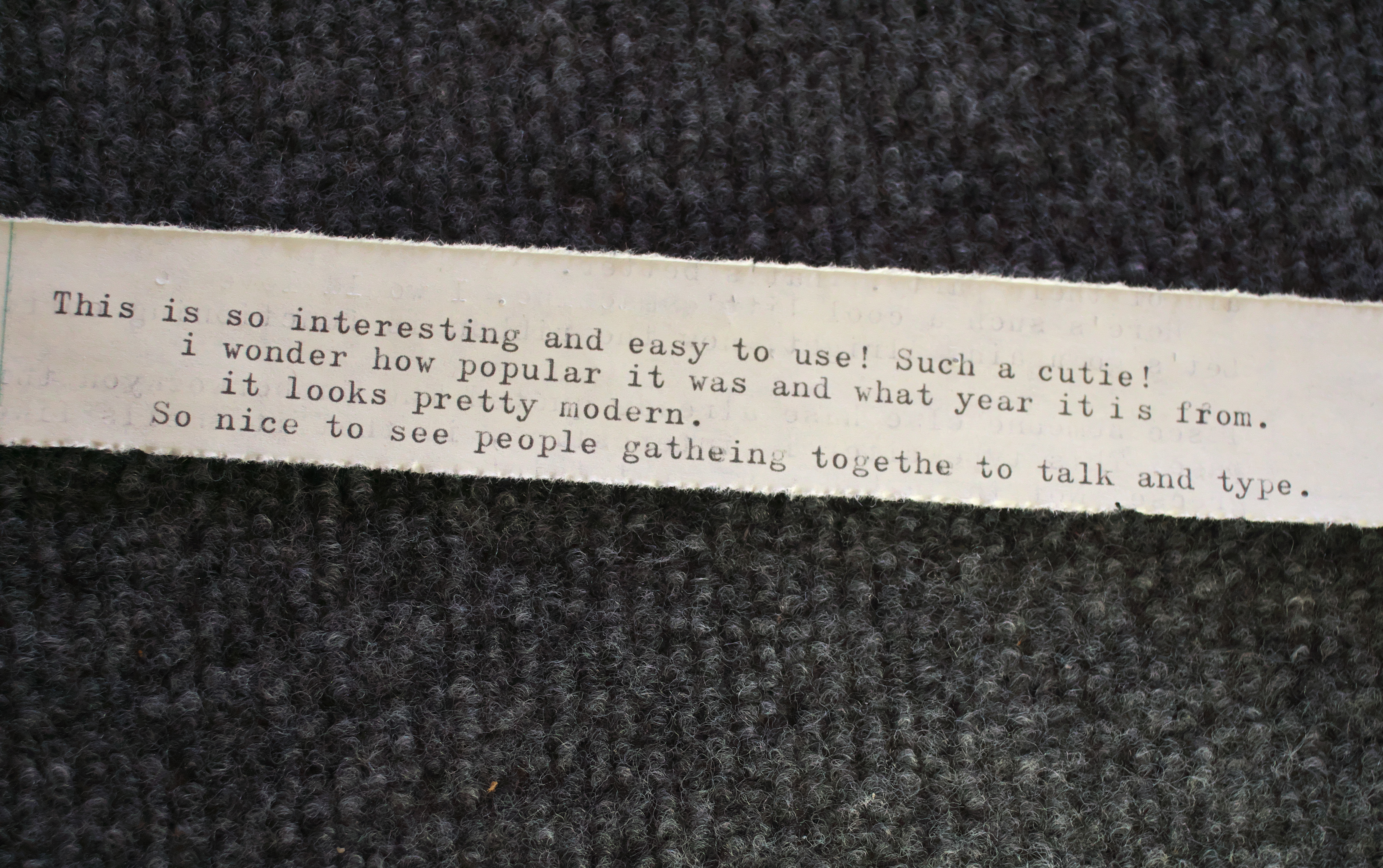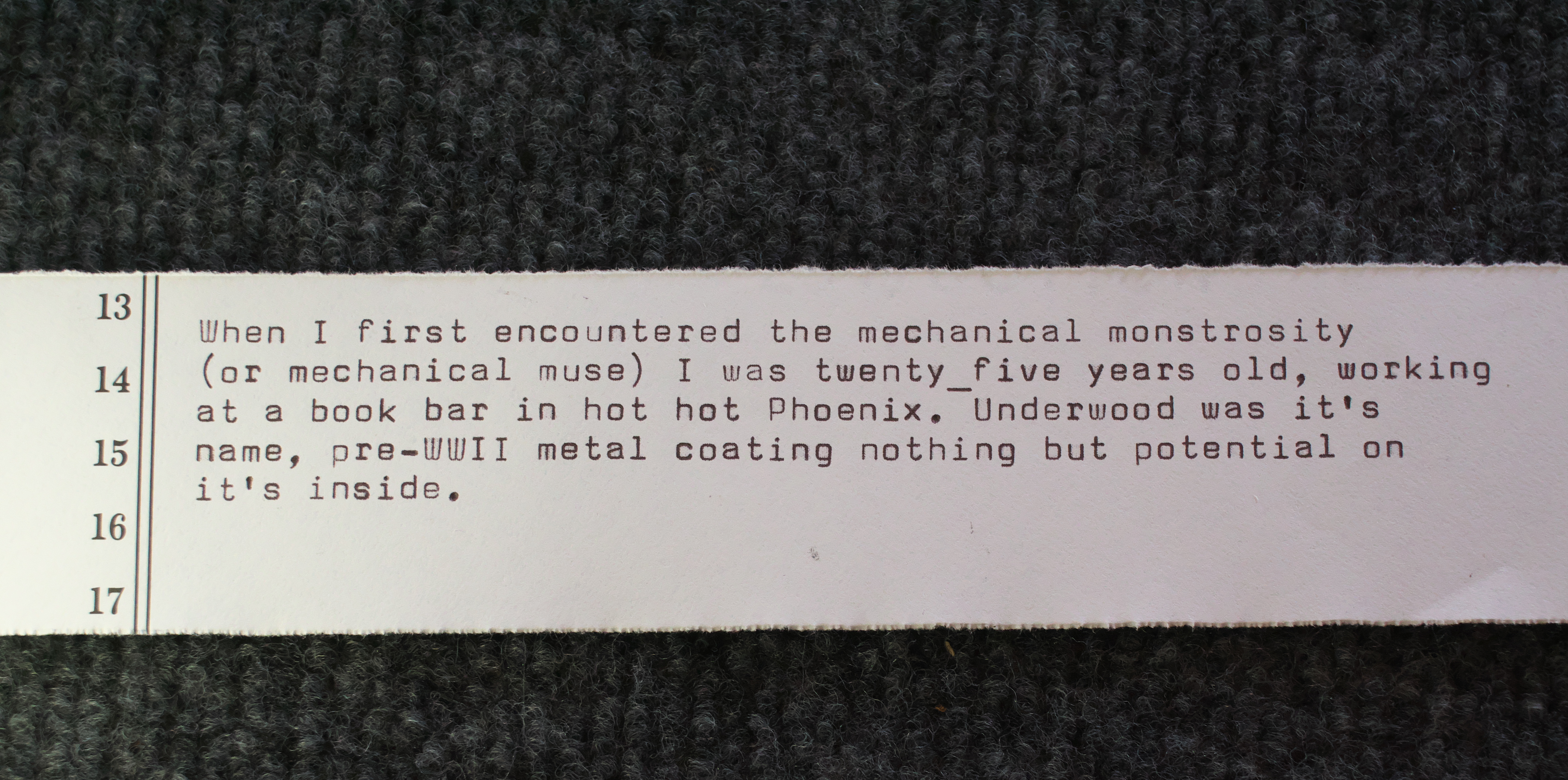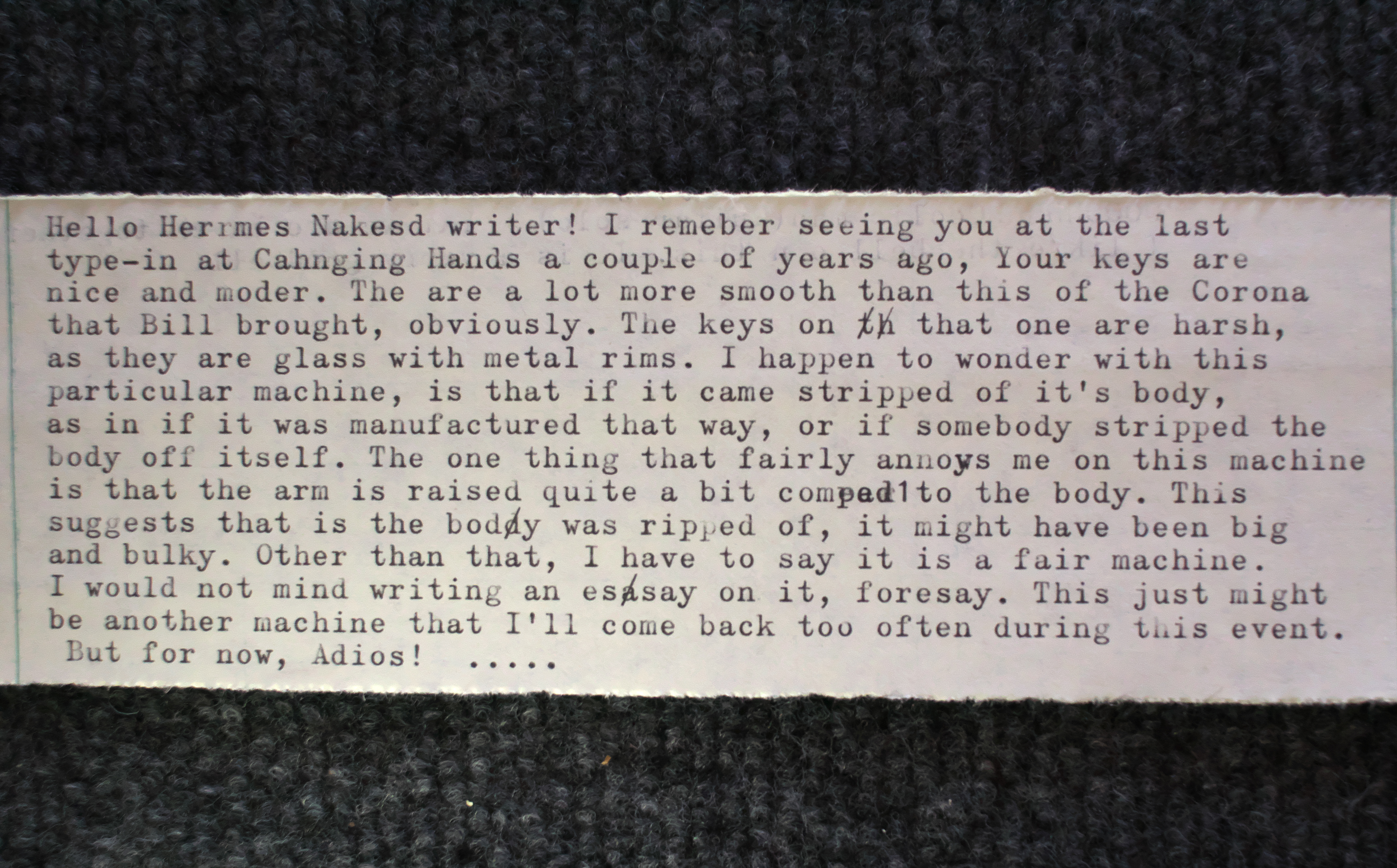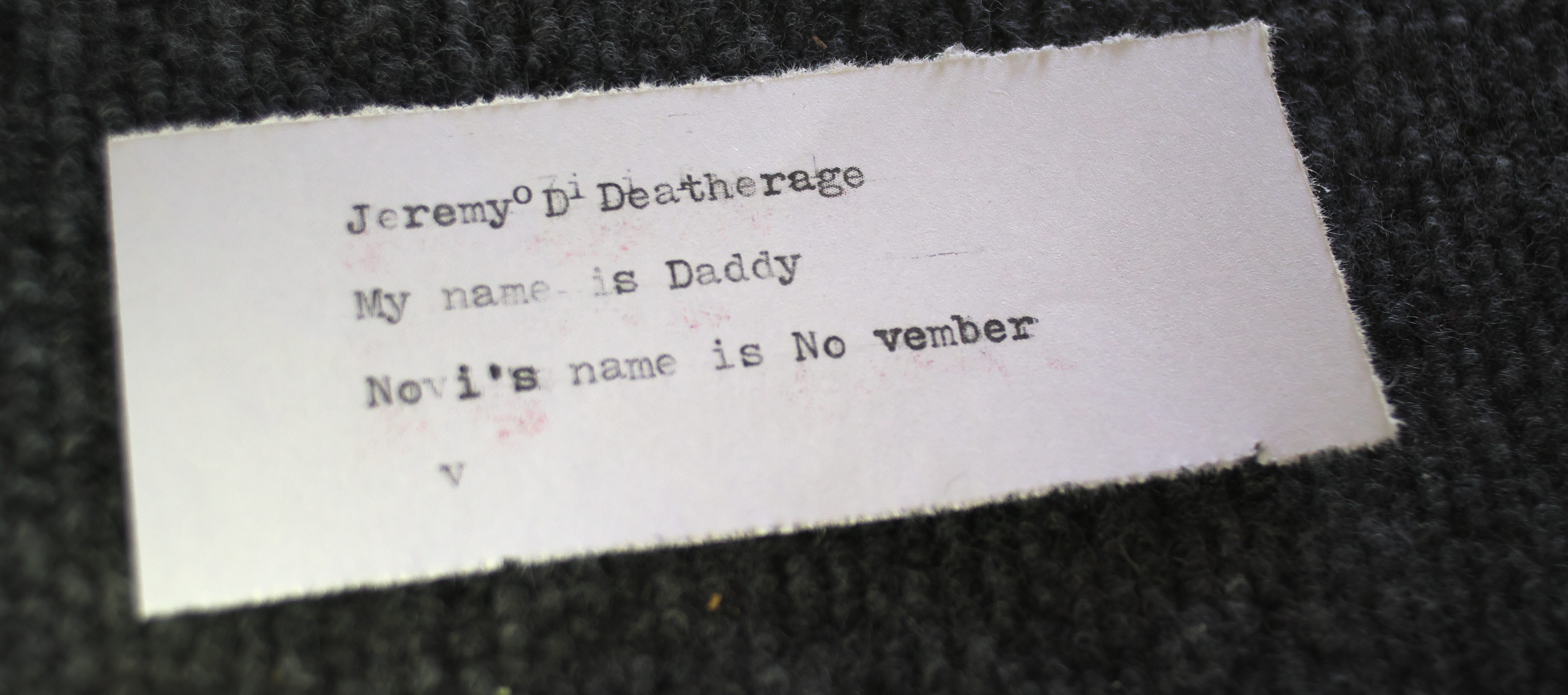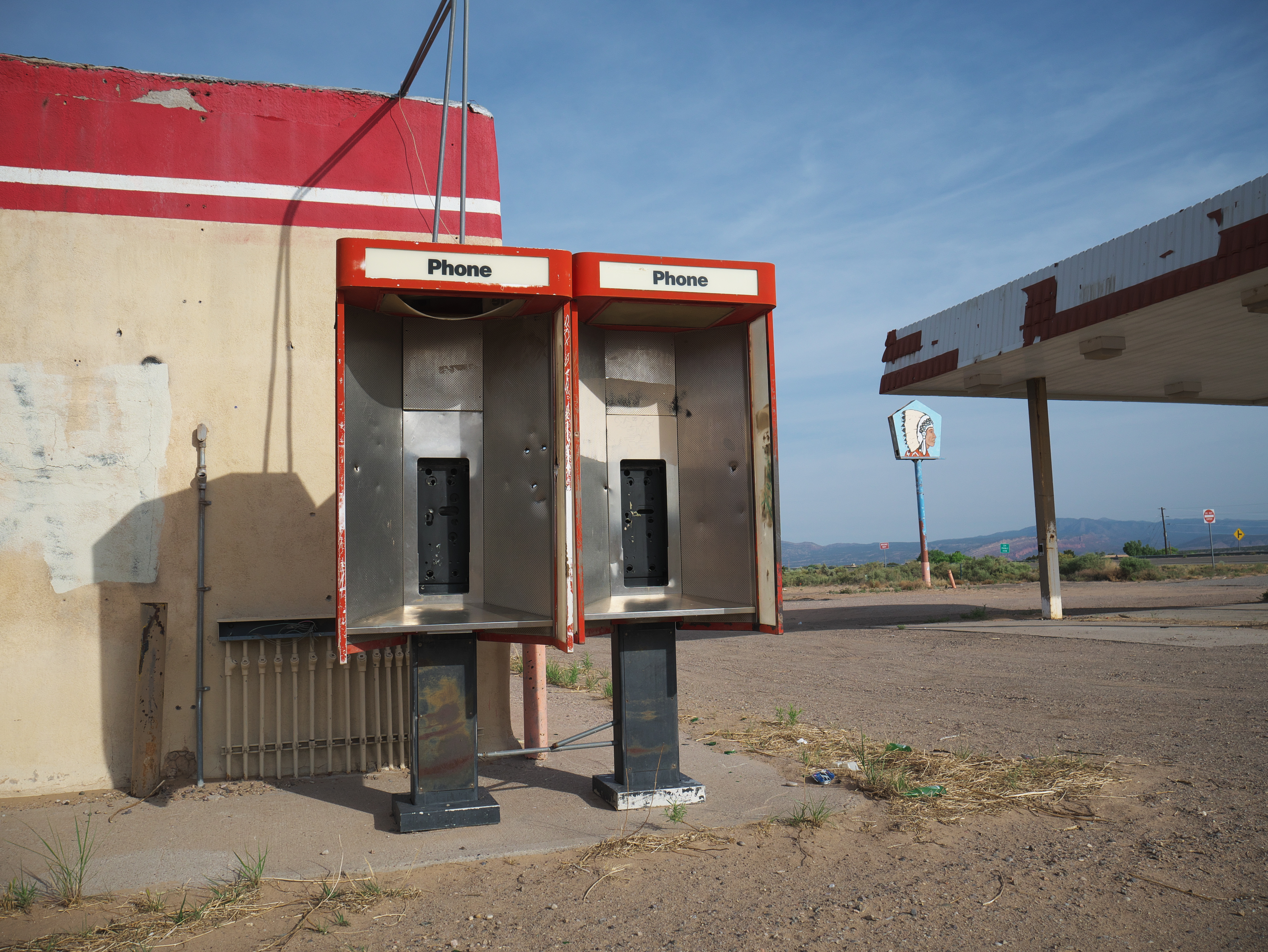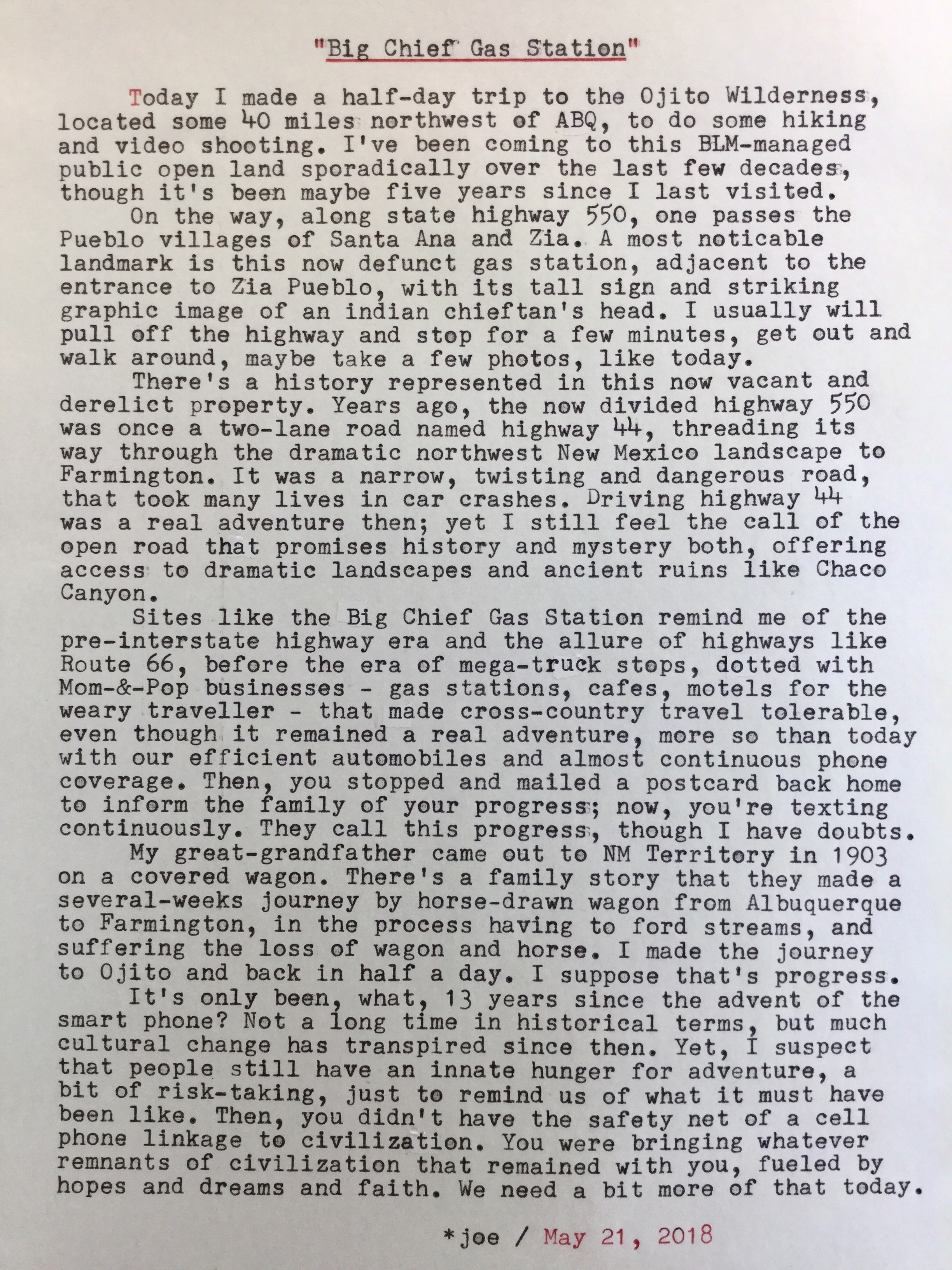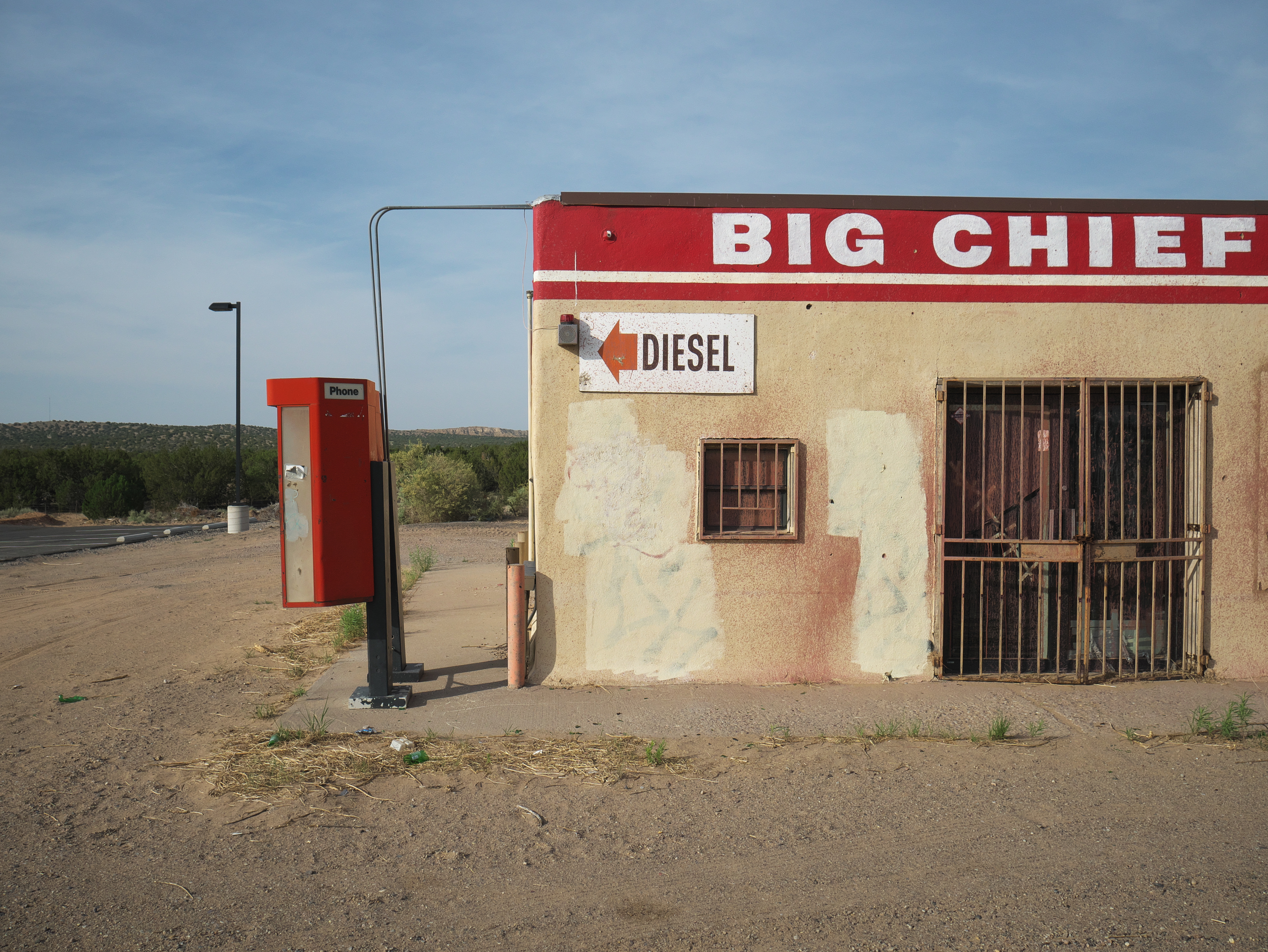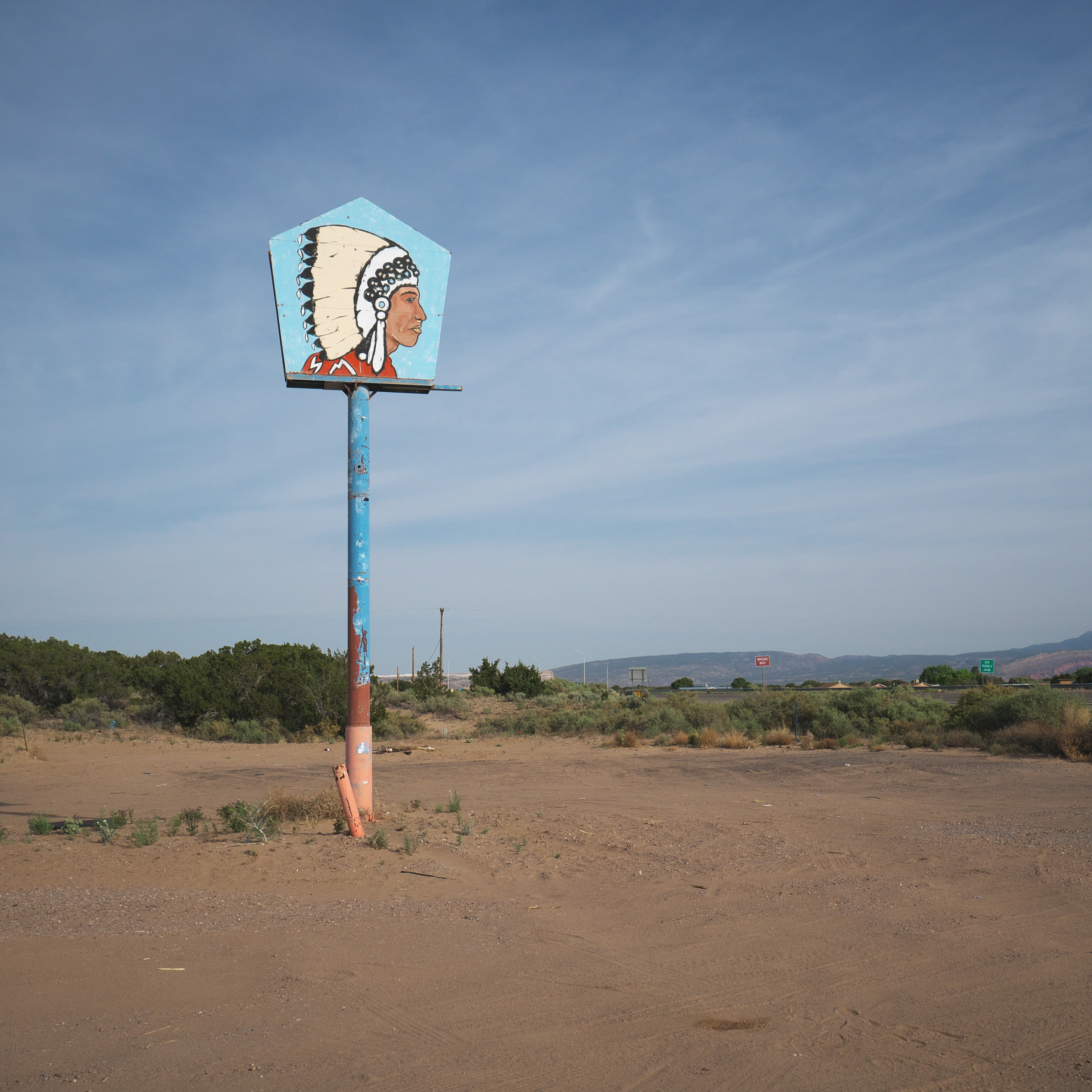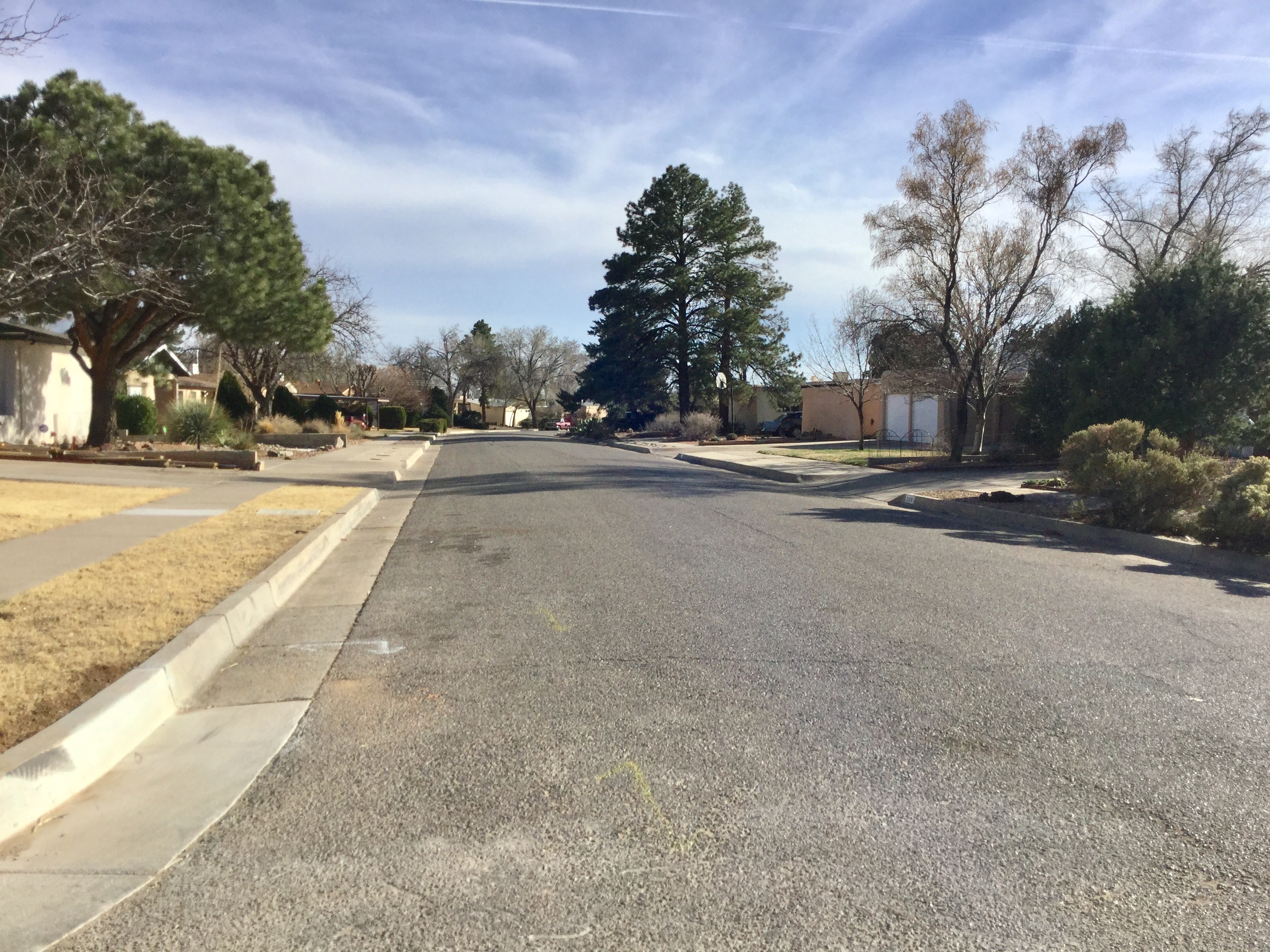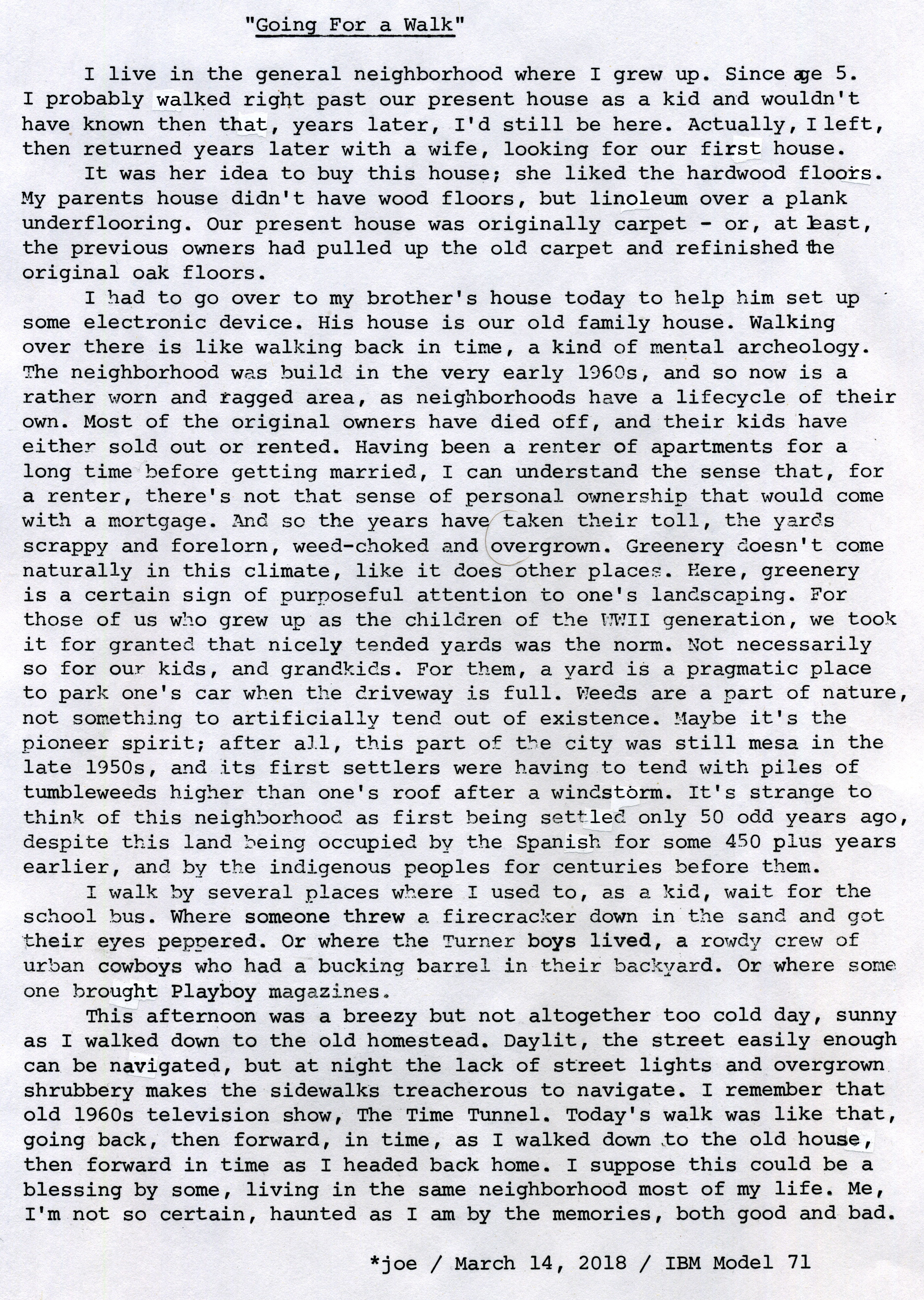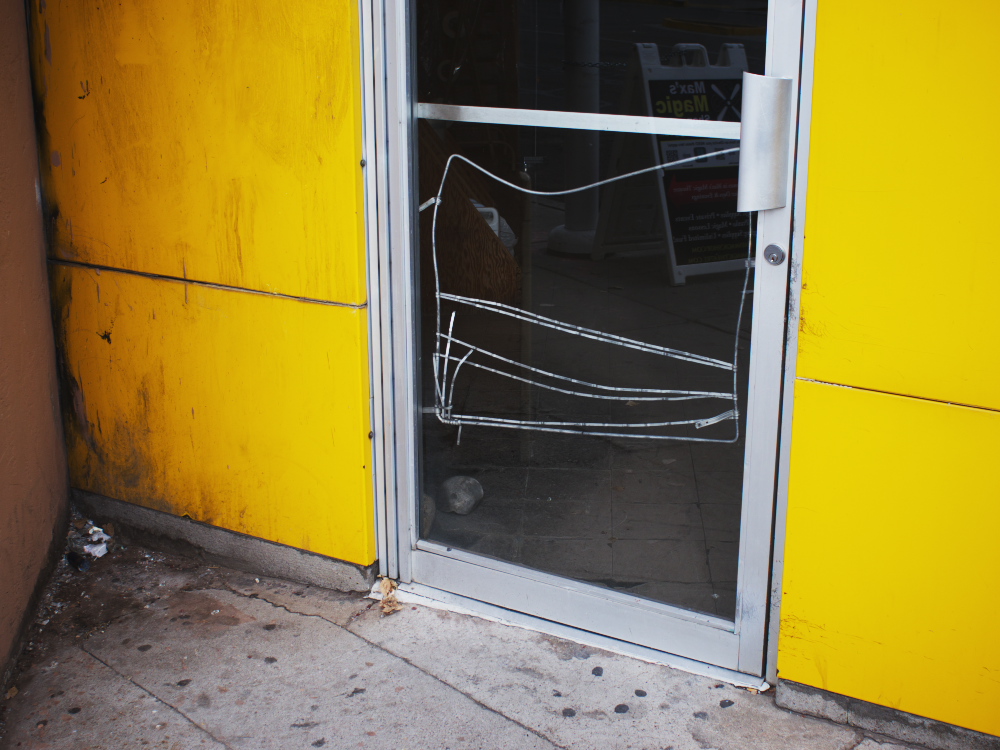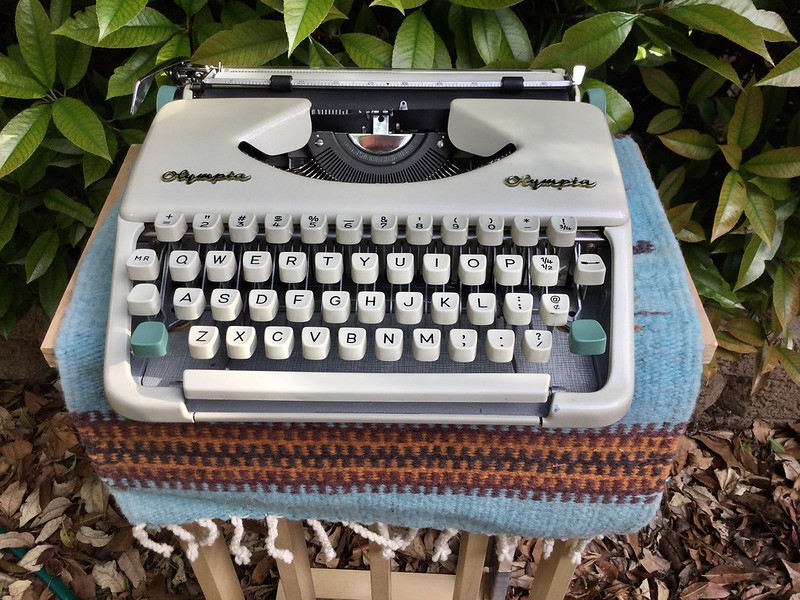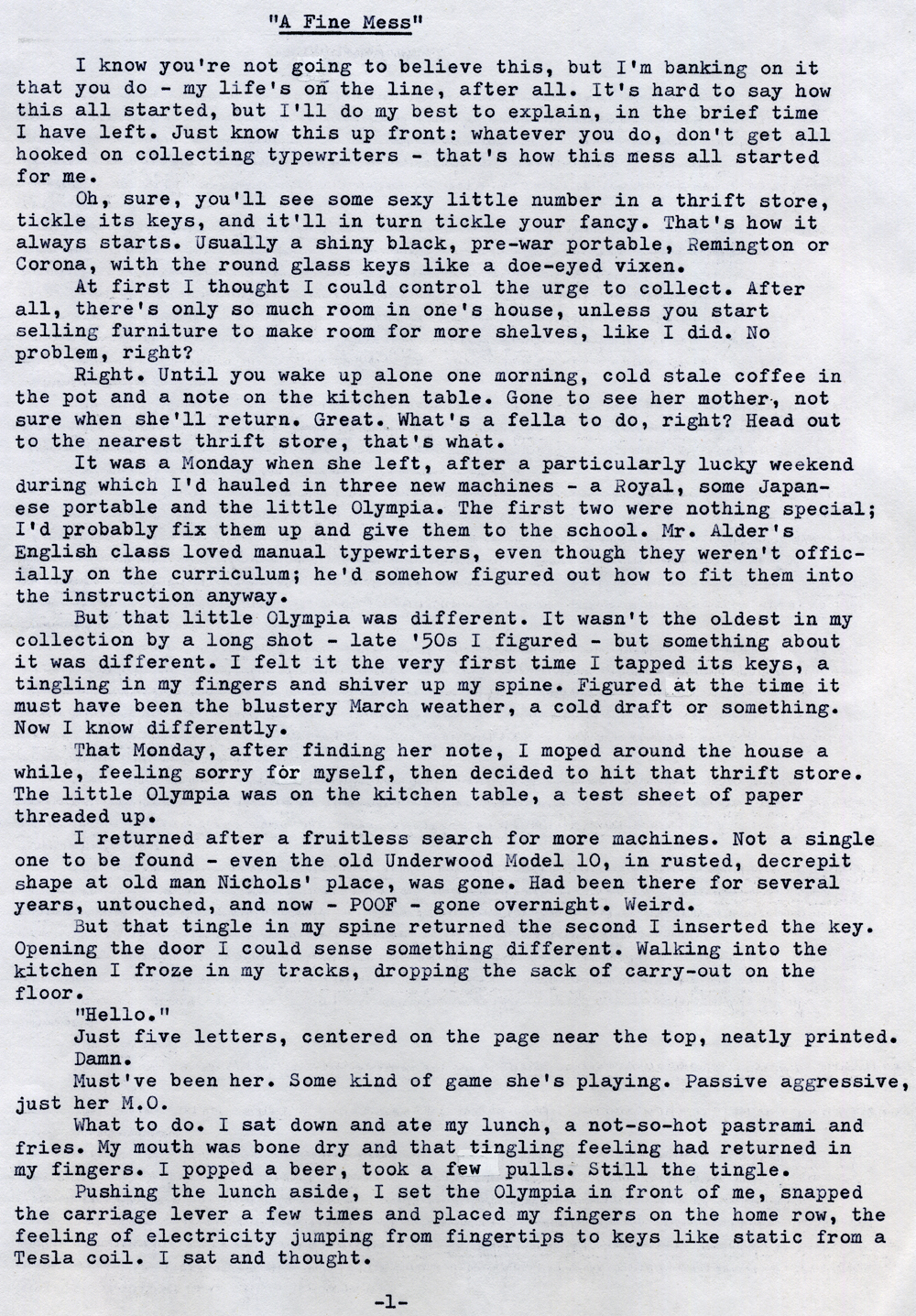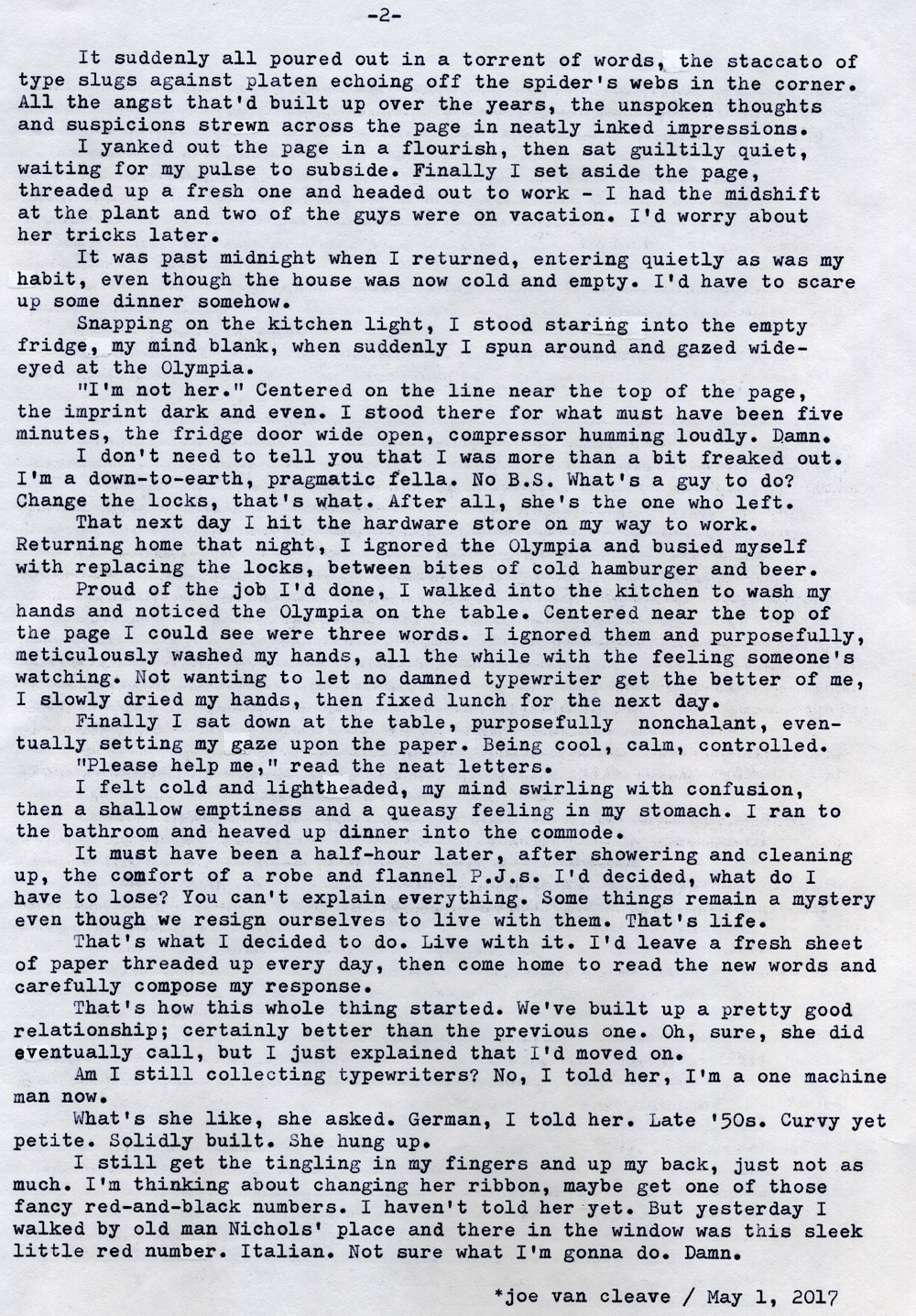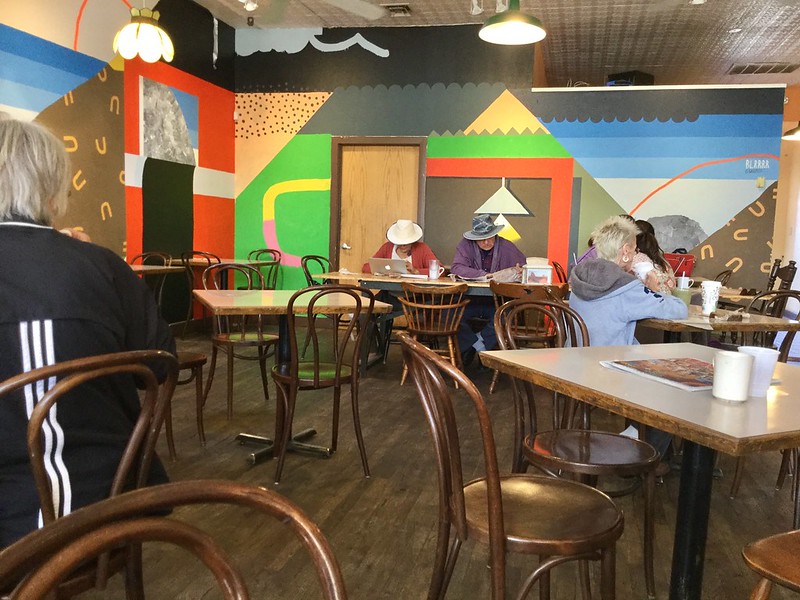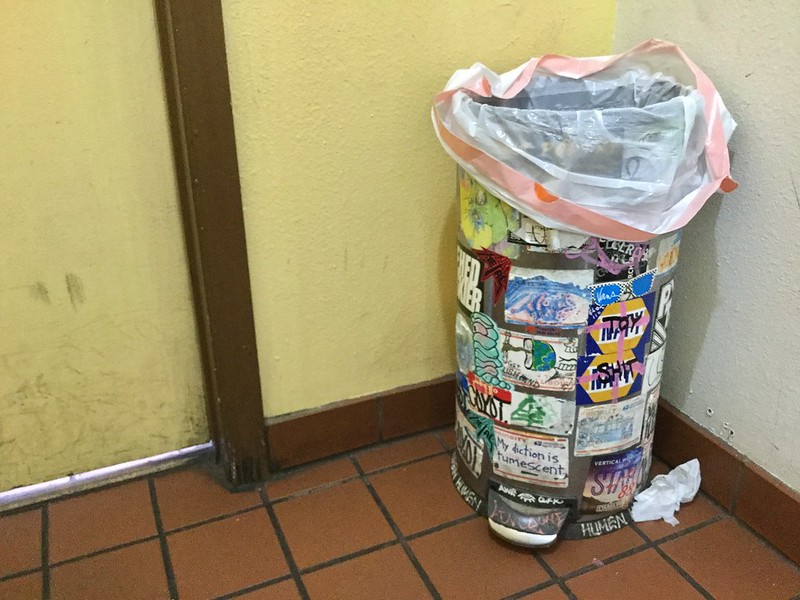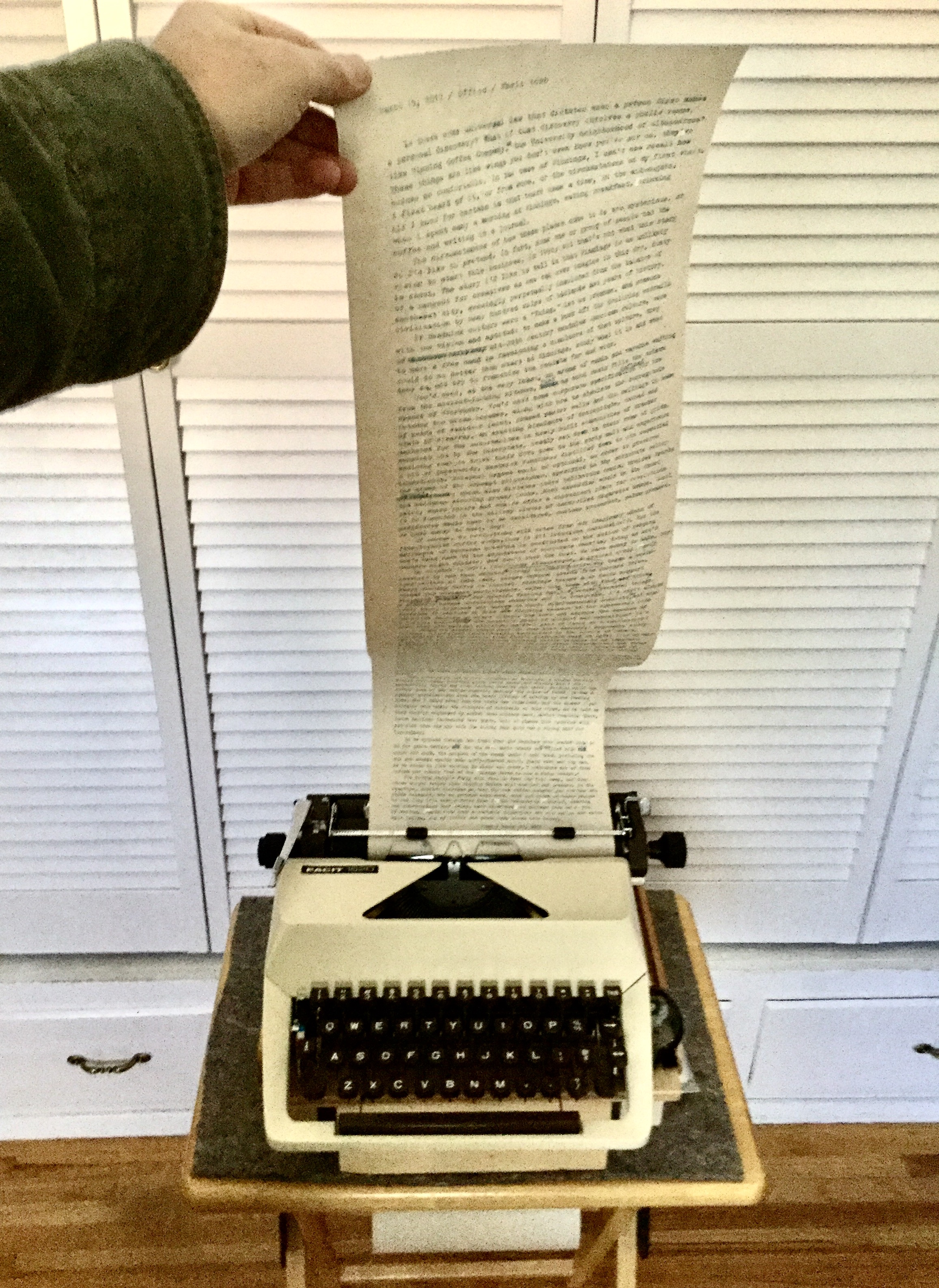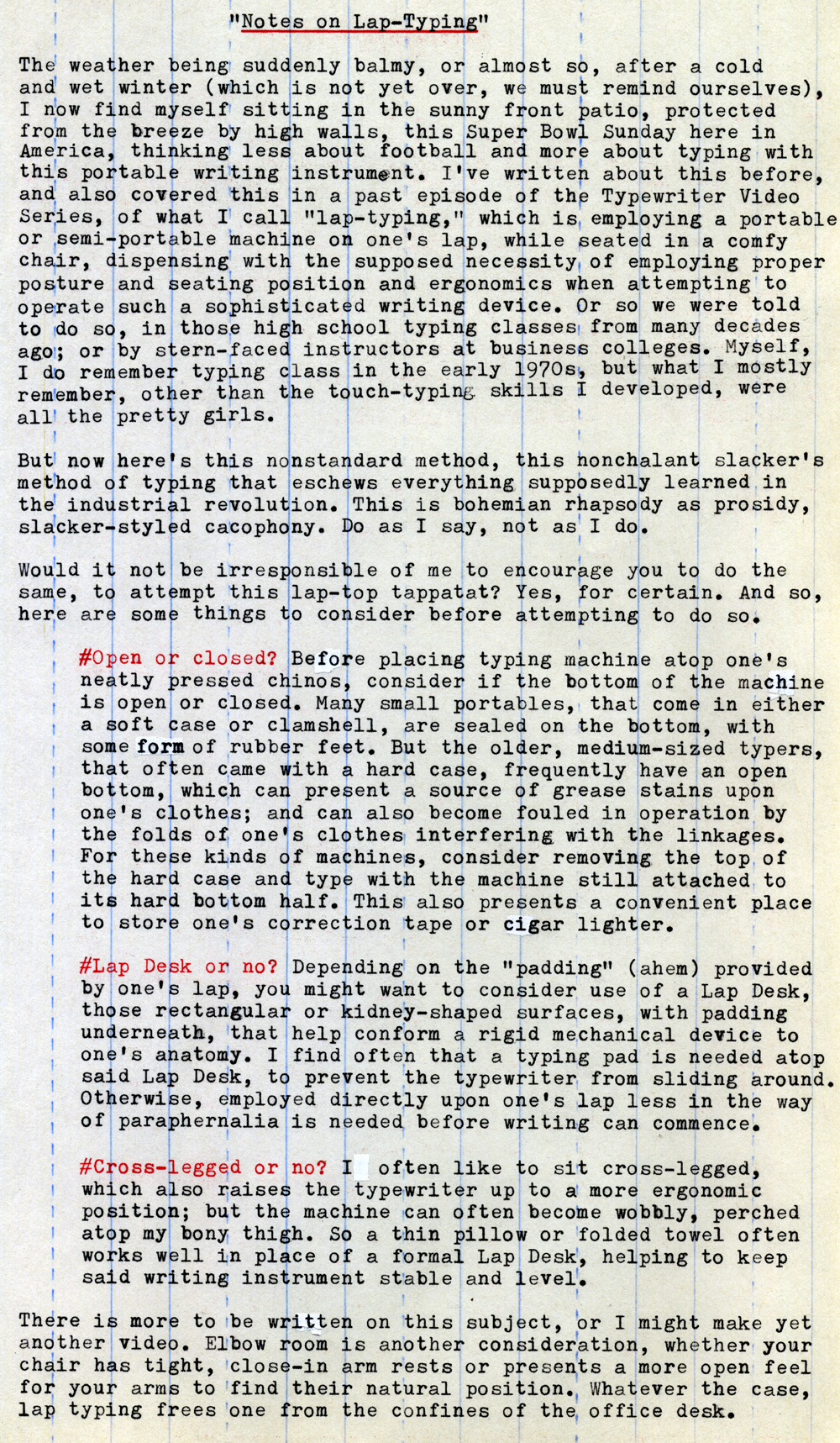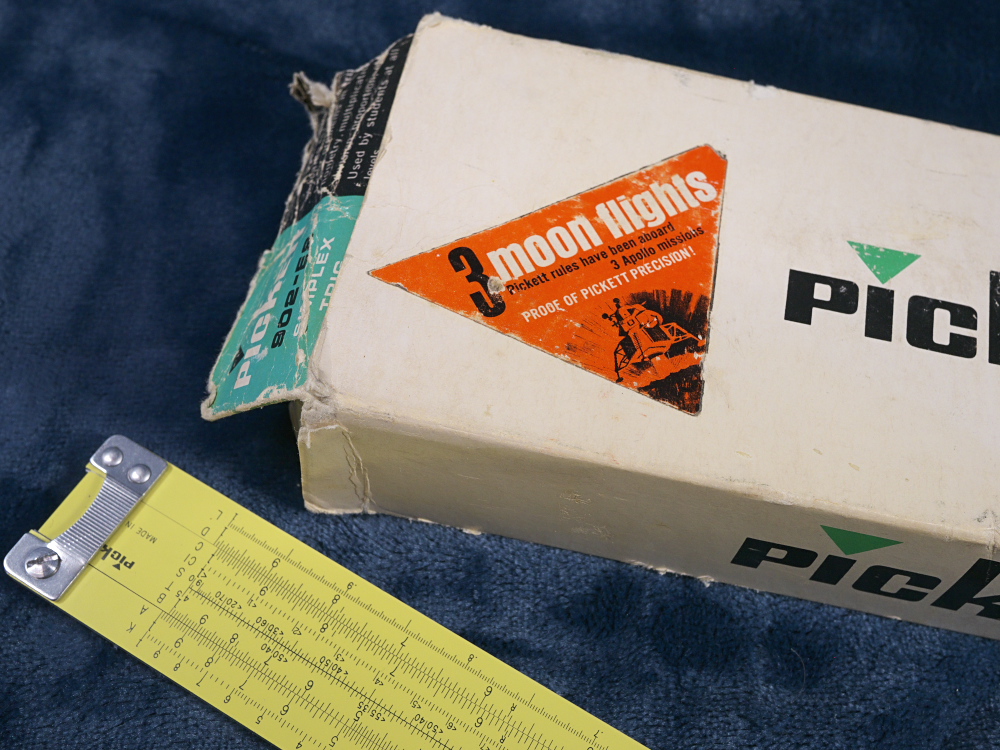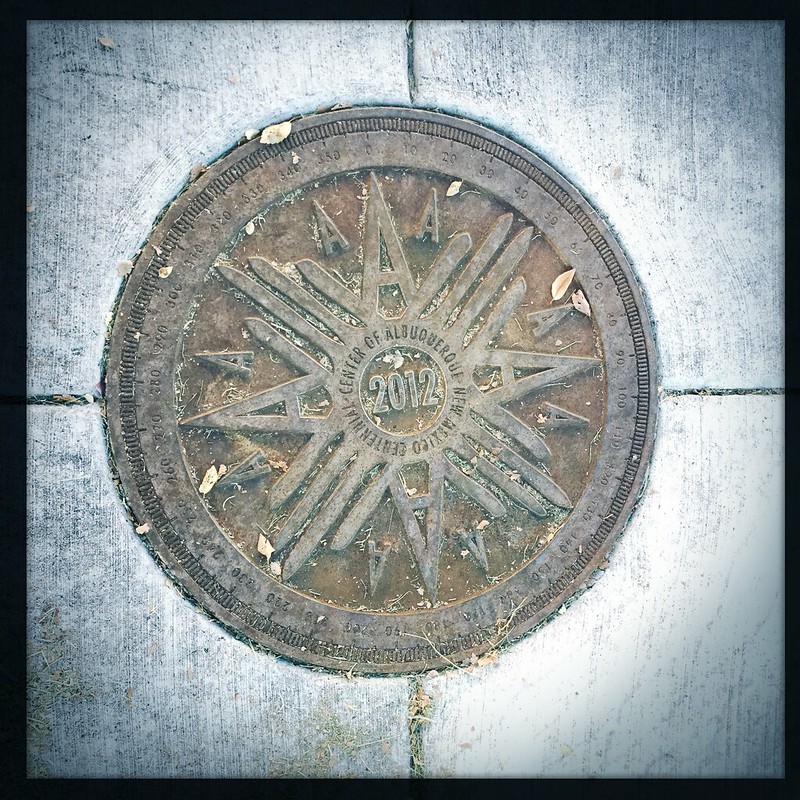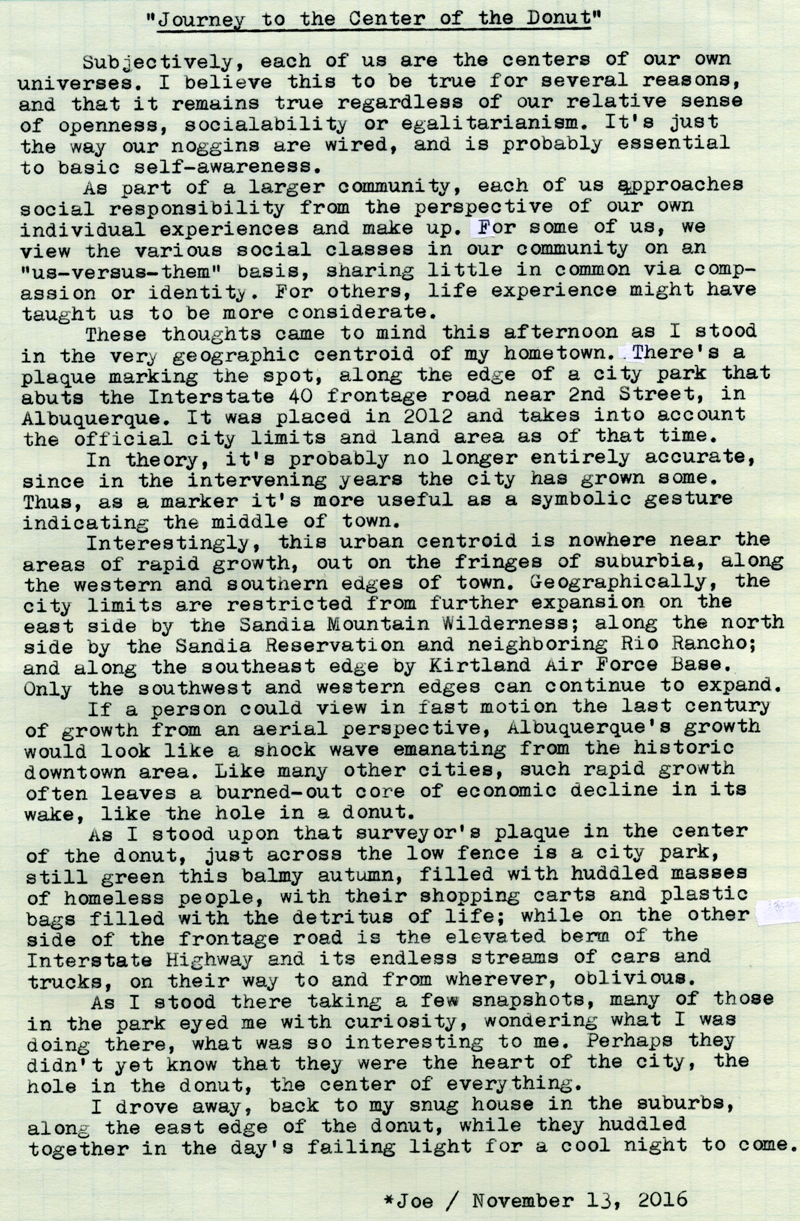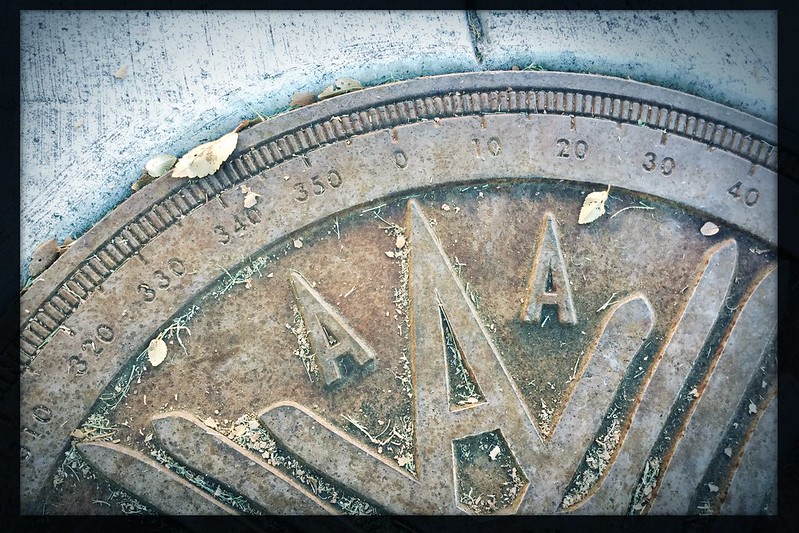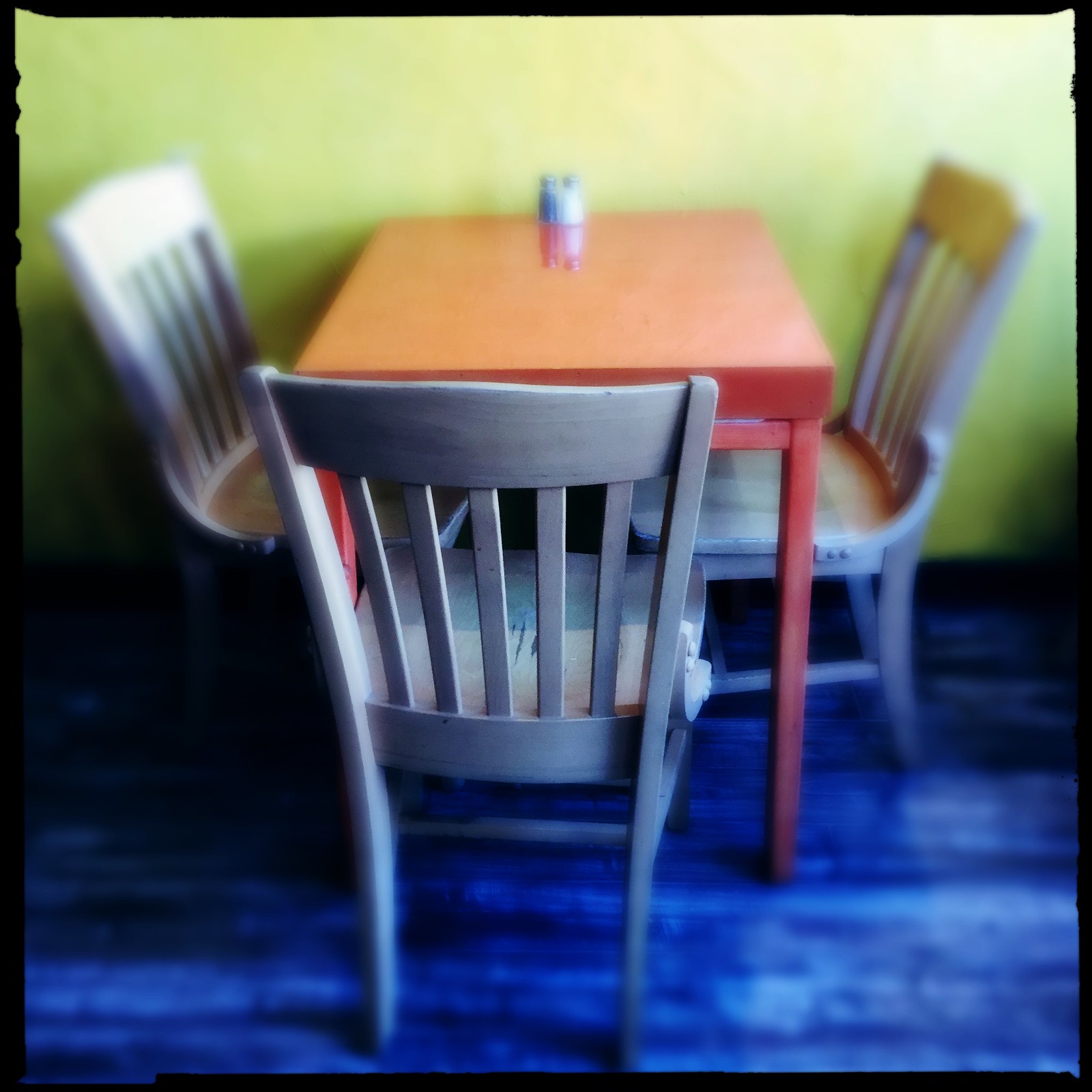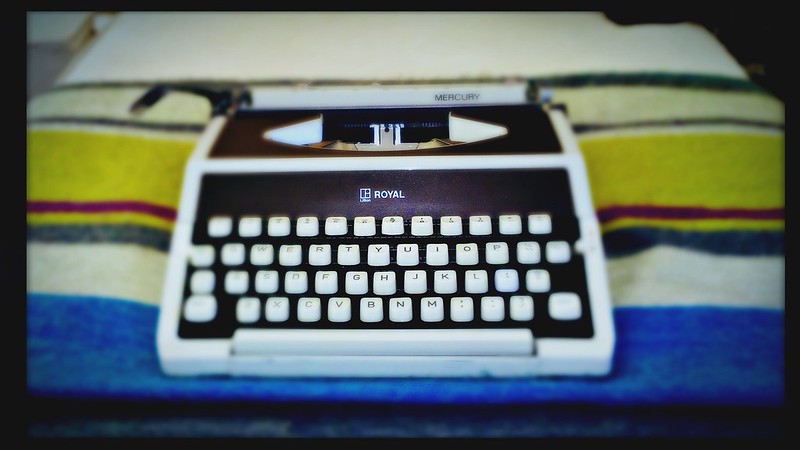 T
Today I want to discuss writing methods. By the term 'writing' I don't mean the art of putting words together, but instead the mechanics of how that's done.
Real writers, those who financially sustain themselves through writing or the teaching of writing, might dismiss this overt emphasis on the mechanics of the process (at the exclusion of creative content) as the dabbling of the amateur; more like street-level scribbling.
But to us street-scribblers, the mechanics of writing are all important, at least as a way of getting over the distractions that come from an ill-thought-out writing system, which is a prerequisite for good writing: get rid of all the encumbrances and roadblocks in the way of one's writing process and the rest will follow suit.
Real writers should have learned early on, as a matter of course in the development of their professional writing skills, the importance of finding and honing their personal kit of tools and methods that enable that creative flow. But for us street-level scribblers, we're always in school, and the streets are our daily lecture series, so we're constantly learning and refining.
The problem for us amateur scribblers is that it's all too easy to confuse the needs of our future writing skills with the necessary but much less important refinement needed to our physical toolkit; similar types of conundrums are evident in the world of photography, where the fledgling confuses the desire for a better camera or lens with what's really needed, that being refinement and development in one's technical and creative skills. So let this serve as reminder that however useful new toys might serve to help refine one's writing toolkit, they ain't gonna make you the next Great American (or insert your nationality of choice) Novelist. But you probably knew that already.
I must confess that I'm a gadget freak, like many males of my age; yet I also admit that I have yet to find an effective way to get over that fundamental blind spot in my personal development. It's probably an artifact of our culture, which sounds like a convenient excuse. Tools, toys, kit, gadgets - they're all fine, and relatively easy to acquire if one is of a sufficient middle-class lifestyle; but harder to acquire are the real skills required of a creative person. This means a protracted period of intense personal development; a lot harder than clicking on some button on Amazon and charging the expense to one's credit card. If only transforming one's mind were that easy.
I suspect this is a problem experienced by many people in our consumer-oriented culture, the expectation that real personal development can be acquired like some mass-marketed product. But ask anyone who's attempted such a personal journey and you'll soon find out that this is a matter common to our humanity throughout recorded history. Education, a true education, is most difficult to acquire, and takes a lifetime.
As to the matter at hand, the making of an effective writing system, this will differ for each individual. At one extreme, many people like the convenience of incorporating the entirety of their writing process, from first-draft brainstorming to the finished electronic document, contained within one system, the computer; and often that computer is a laptop, for reasons of convenience and portability. At the other extreme are people who prefer the hand-wrought crafting of words by pen, pencil or typewriter onto paper, only later to be developed into a finished electronic document. There are also many others whose personal writing system falls somewhere in between these two extremes, the choice often resulting more from personal circumstance and habit than any particularly specific philosophy or bent.
Such habits can be formed through a process akin to superstition, like the way that some sports athletes make preparation using a specific set of pre-game routines or articles of clothing; not because they actually believe there to be some supernatural connection between that particular method or object and the outcome of the game, but more like whatever seems to be working for them, they're not going to change it; keep as much as possible the same and perhaps success can be made more likely. Superstition, or a more effective psychological strategy? Hard to say; perhaps a little of both. Writers have been known to be a superstitious lot, frequently sticking to whatever works (like an obsolete word processor from the 1970s, or that old typewriter) because writing is hard and mysterious and why mess with what's working?
For myself, what has worked for me in the past - and by "worked for me" I mean been able to eliminate distractions and produce effective and creative writing, is both handwriting, either by means of mechanical pencil or fountain pen, and other methods like keyboarding into distraction-free text editors and also manual typing. Is this some magic formula? No; merely working out the application of past experience to future projects. I suspect the "magic" that comes from using these various successful writing methods is because of the confidence they inspire; the knowing that what worked for me in the past will again work for me in the future. It's more a trick of psychology, which is the realm within which all writers blocks originate. The mind is mysterious and unfathomable, its depths yet to be plumbed; especially the creative mind; which is why I consider the act of creativity to be the one essential test of true artificial intelligence.
But knowing that my past successes don't entirely hinge upon one specific set of tools or methods, perhaps I can find other methods that work equally well, or better. That is the approach I'm using with this recent endeavor of employing mechanical computer keyboards with iOS devices. There are many kinds of mobile electronic devices that can host writing applications, everything from Mac or PC to Android or iPad tablets. And bluetooth keyboards also seem to abound, though they lack that preferred mechanical feel. But knowing that some of my best writing experiences involve keyboards that exhibit a particularly satisfying mechanical feel (including both AlphaSmarts and manual typewriters), this new approach tries to synthesize the very best of that mechanical keyboard feel with the advantages of a modern and relatively error-free operating environment, like iOS.
Portability is also of essence to my preferred writing system, for I've found, over the years, that I'm not a static writer, but prefer a variety of places within which to write; hence whatever device I'm employing must be small and lightweight enough to be conveniently carried with me from place to place, even if those places are merely located in and around my neighborhood coffee shop or backyard shed. Over the years I've worked with a number of portable typewriters and, while they are effective tools for creative work, are not as convenient as a more portable device like keyboard and tablet; and are often less than welcome in an enclosed public space, due to their operating noise. For this reason, I've chosen a so-called "60%" sized mechanical keyboard, one that's about the same size as the keyboard of a mechanical typewriter, encompassing a mere 61 keys in total. The feel of this keyboard is every bit as good as, perhaps even better than, that of the AlphaSmart Neo - which is saying a lot; one reason being that, at the time of order, one can choose from a selection of six different Cherry MX keyswitches, thus the feel of the keyboard can be customized for one's personal liking. Mechanical keyboards, of the type I'm using, are now gaining popularity with a wider user base of writers, outside of their original gamer and programmer sub-cultures.
This is perhaps the fourth article I've written in recent weeks on this subject of mechanical keyboards employed along with electronic tablet devices. I've been typecasting - writing, scanning and posting mechanically typed prose to my blog - for almost a decade, which I don't foresee terminating any time in the future; but there is a convenience factor at work here with this new toolkit, the ability to, at a moment's notice, pick up iPad and mechanical keyboard, go somewhere, anywhere, and type out some thoughts, complete with spell checking and embedded HTML markup language, ready to be pasted to a blog template or elsewhere.
I recently went back into my archives of journal books in order to gain a deeper sense of my personal writing history, and what I found was that there's this huge gap, somewhere in the mid-aughts, after I'd supplanted hand-written journal books for various experimental and electronic writing systems, such as Palm-based portable devices and others, and before I'd begun typewriter journalling and blogging more consistently in the later aughts. I attribute this gap in my writing history not to a falling off of my writing activity but because these experimental systems simply hadn't worked out all that well as archiving systems. This mainly had to do with the way I'd managed (or mismanaged) backups to my computer system; but many of those writings are gone forever. It's clear that whatever writing methods one chooses, the stability and security of those documents is essential.
Contrast this with the fact that I have a sizable archive of paper-based writings which, although residing in the physical realm and therefore susceptible to the vagaries of both time and moth, seem to have weathered the digital storms just fine. I think what many of us tend to forget in this regard is that digital media are essentially physical in nature: there's some physical media within which the code resides, and that physical media- magnetic, optical or electronic - is often more fragile than the paper it was intended to replace.
I'm not suggesting that we go out with pitchforks in hand and burn down all the server farms; far from it. I think cloud-based backups, especially for relatively tidy files like text documents, are practical alternatives for us becoming our own IT specialists with home-based systems. But another practical backup alternative is to maintain paper documents. Having that irreplaceable story printed to paper has saved my bacon more than once. Yes, paper does take up room, and large boxes or notebooks of paper documents can be rather heavy. But so too is an article of furniture; I'd like to think of that physical archive of my essential work, printed to paper, to be like the furniture of the mind.
And so I'm suggesting that my mechanical keyboard + mobile iOS writing system will also be outputting a printed copy to paper; especially for writings such as personal journal entries, essays and stories, that are not immediately posted to the Internet, as would be the case with blog articles (which will be supported for perpetuity as long as the likes of Google remain viable businesses). Big Brother's IT department is well-suited for archiving my public writings, while my private work I think will be best backed up on paper. Had I done this back in the mid-aughts, I'd still have all of those personal journal entries.
I'll also continue to create works direct to paper via typewriter, pen or pencil. They're all essential, they all work for me, they each have unique attributes and purposes. But I find a good mechanical keyboard and writing app to be faster than hand writing and just as effective. Neither am I suggesting that I'm going to be abandoning typewriters any time soon. There are peculiarities to the experience of writing via a typewriter that are unique, and can spur uniquely creative results. Typewriters these days I don't see as effective tools for the final stages of editing a work into a finished piece, because word processors simply move text around so much easier. But for those early, creative phases of writing few things can match the typewriter for its ability to somehow pull out of the writer's guts the essence of what that piece will soon become. Hence the old saw about choosing the right tool for the right job. Luckily for me, I now have one more good tool in my writing toolbox.
Labels: AlphaSmart Neo, notebooks, storytelling, word processors, writing

